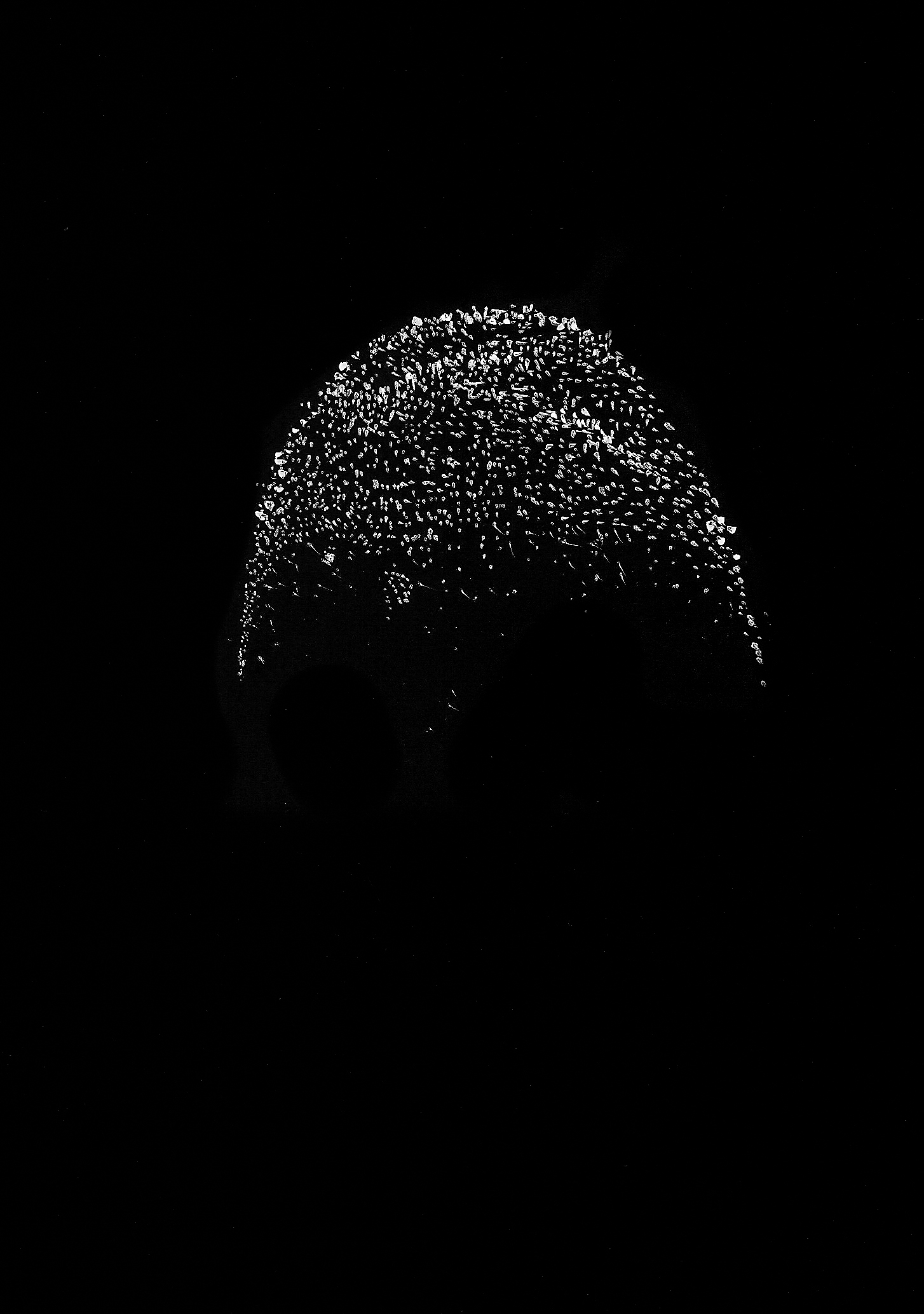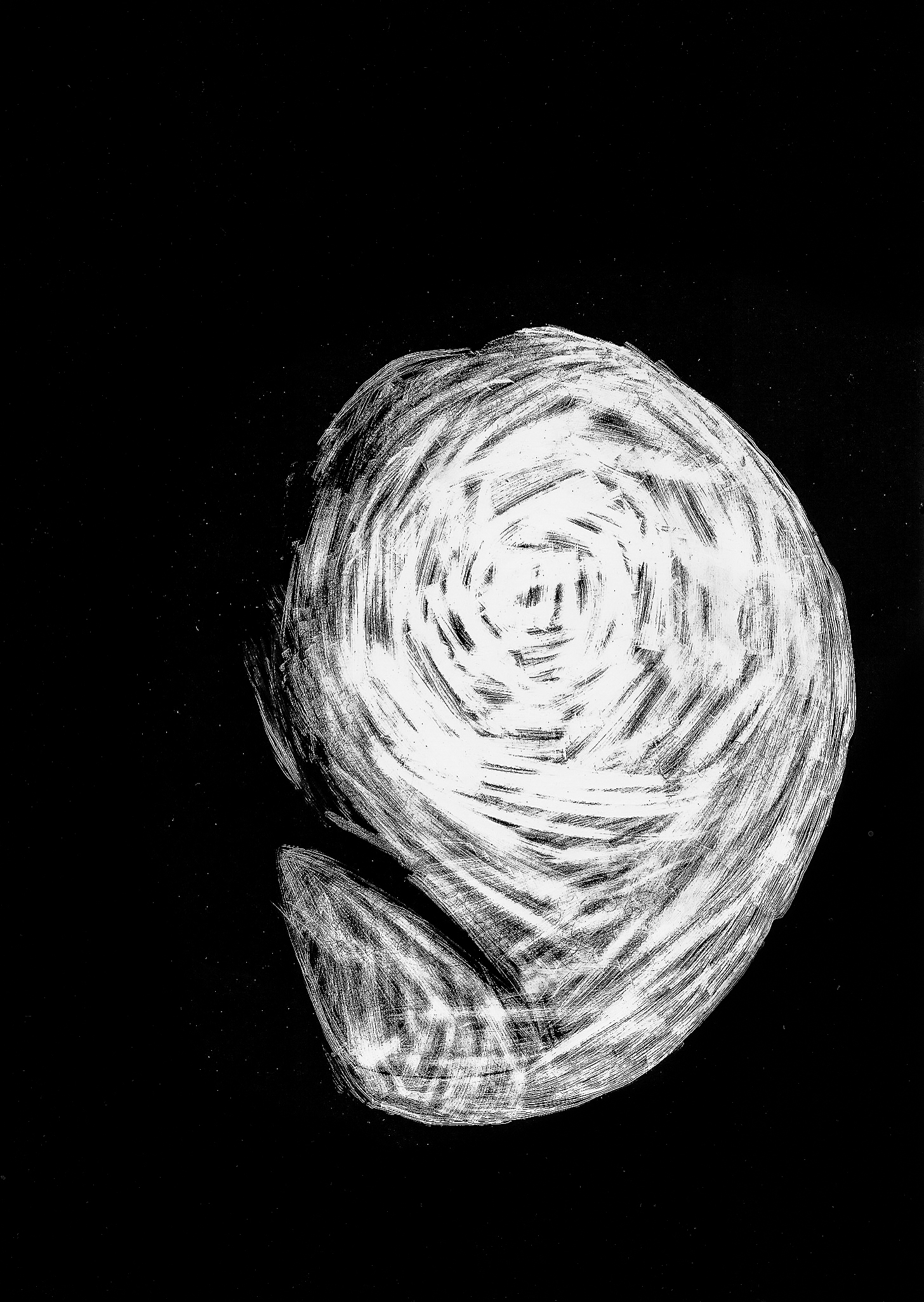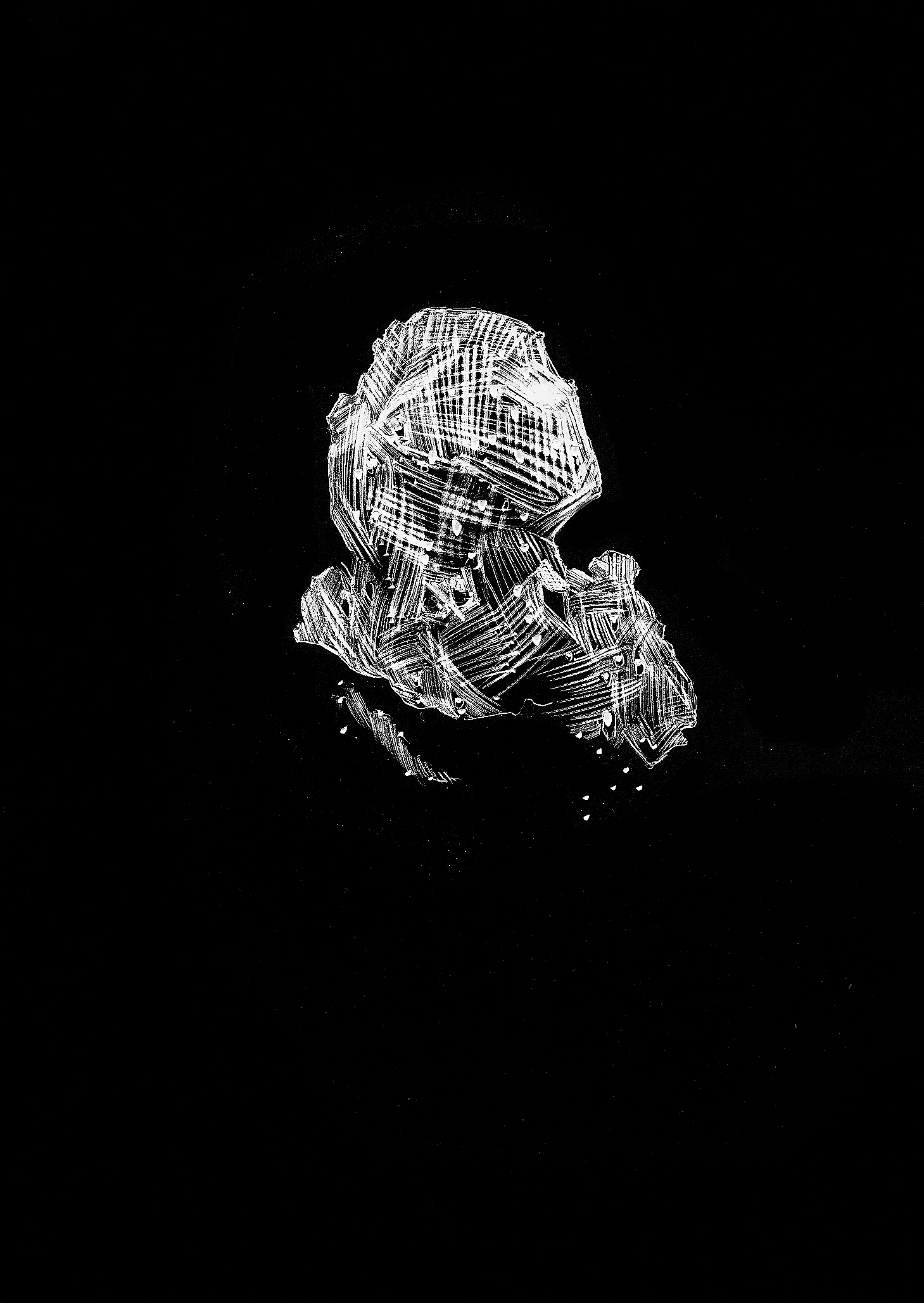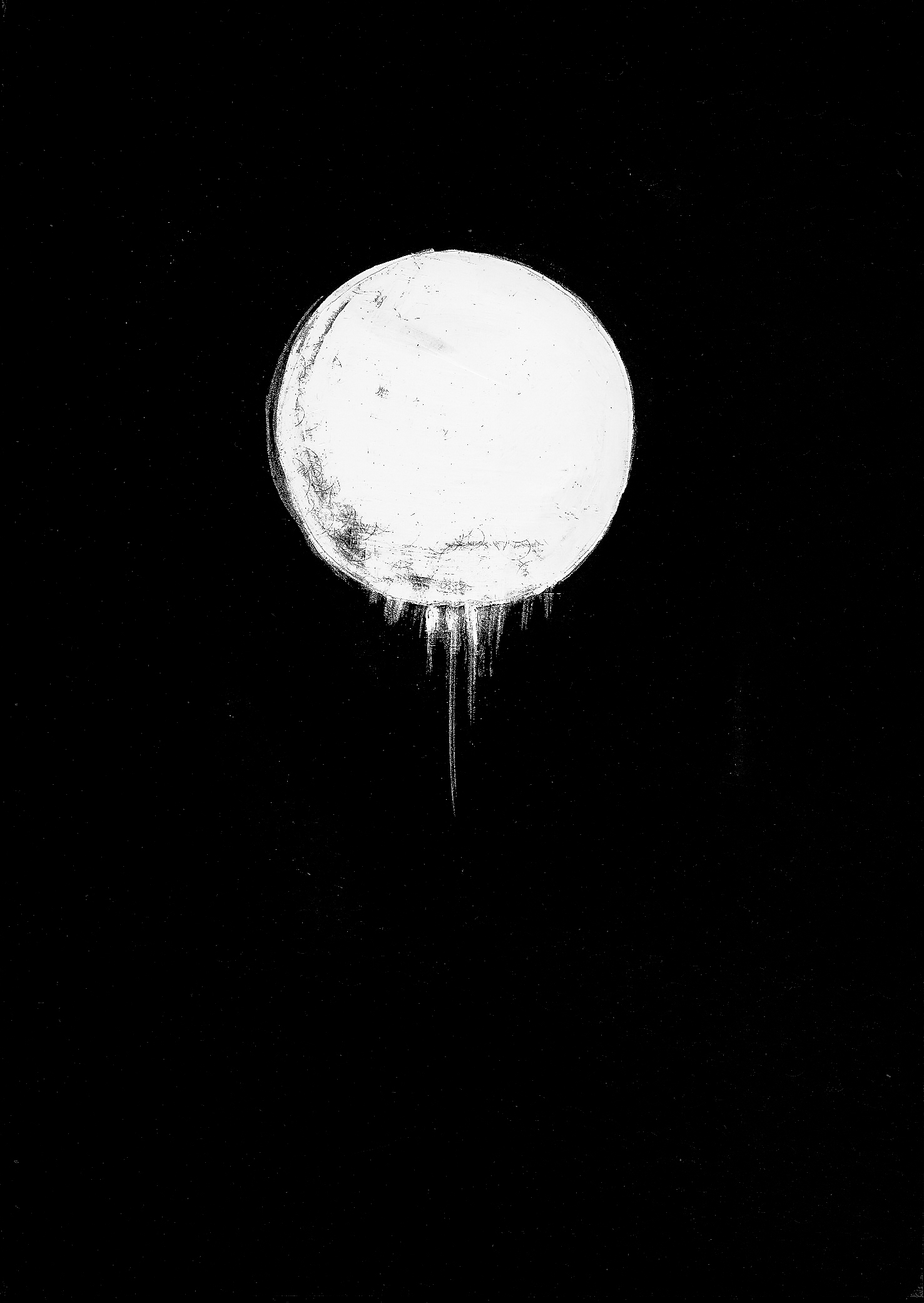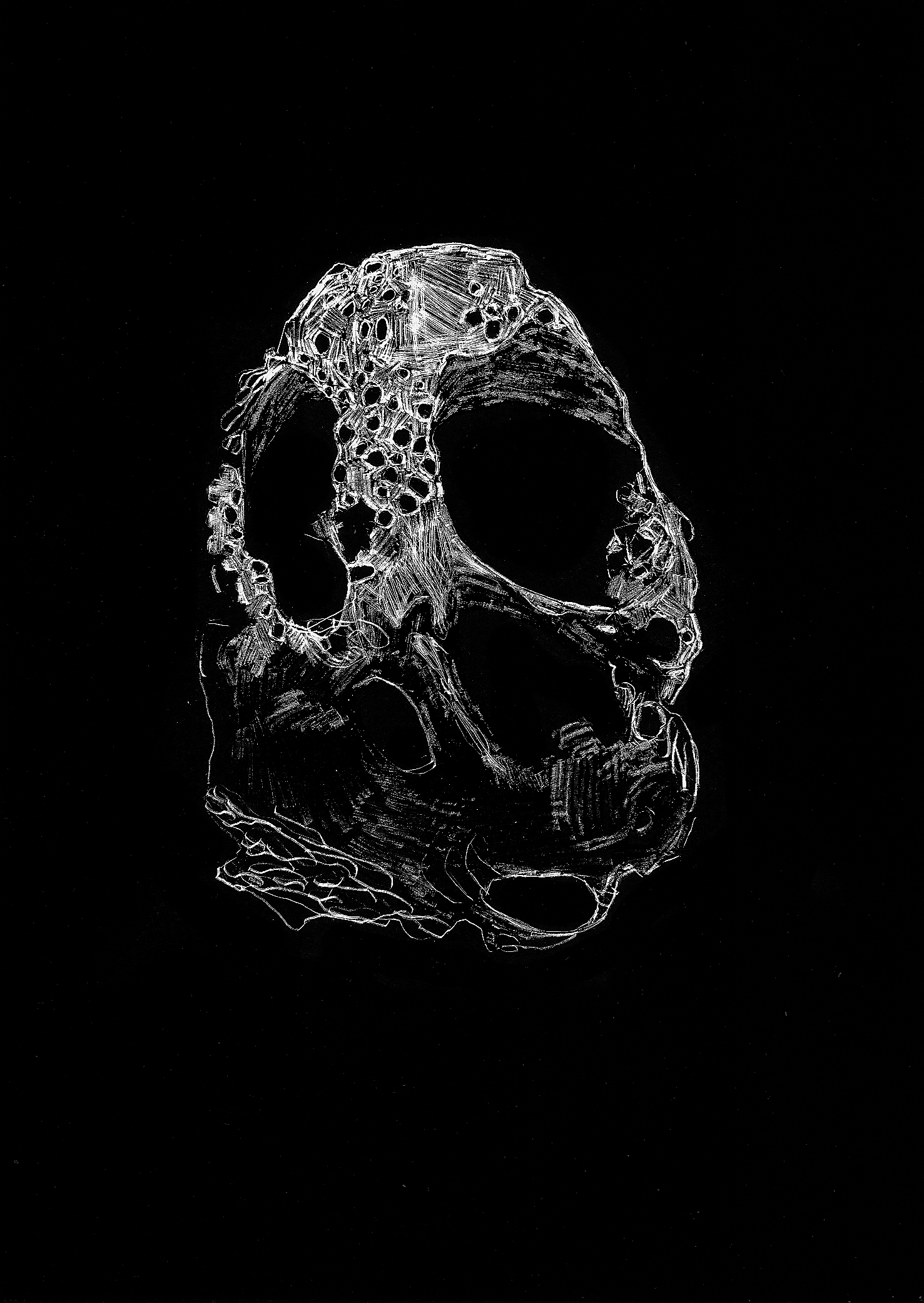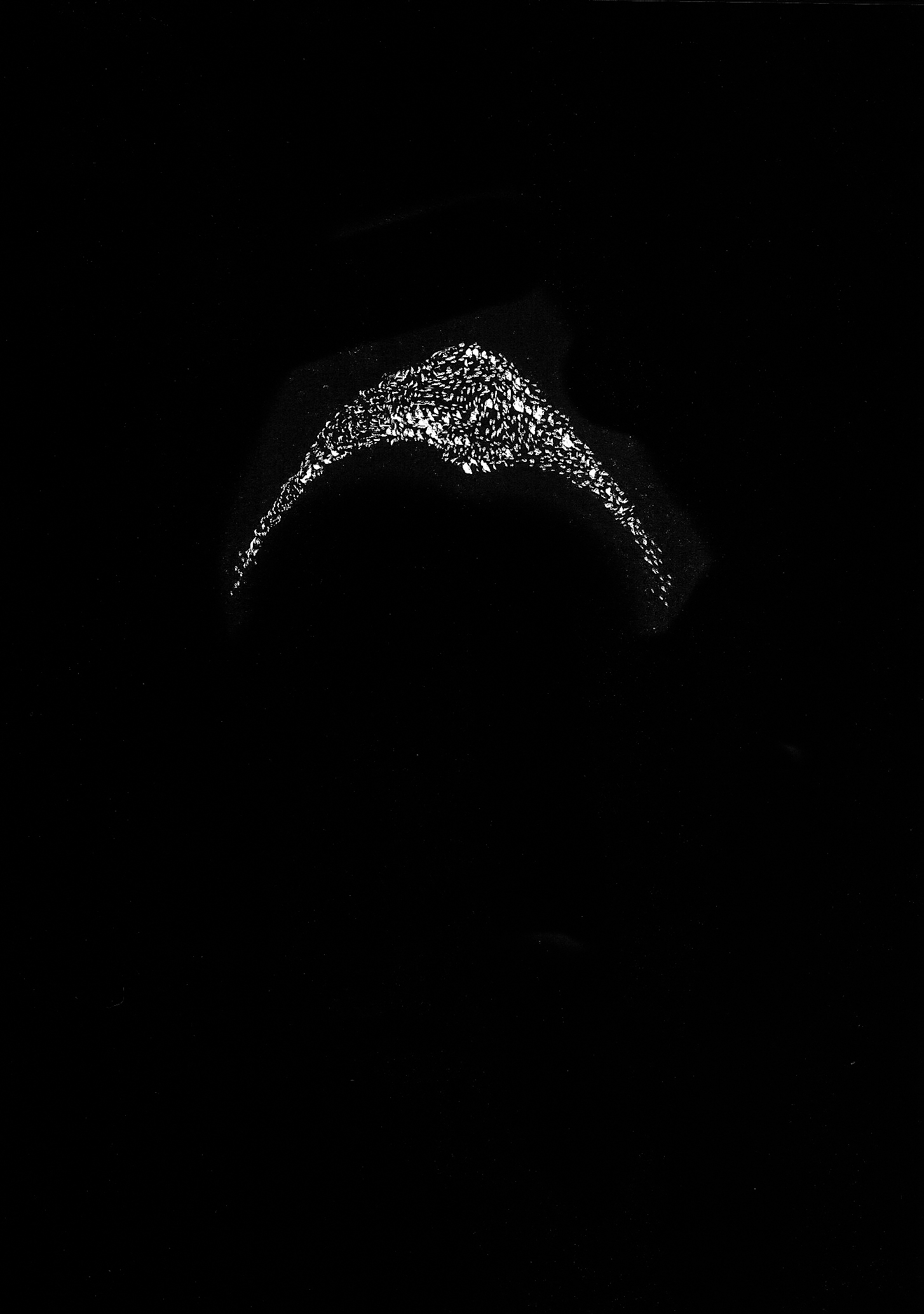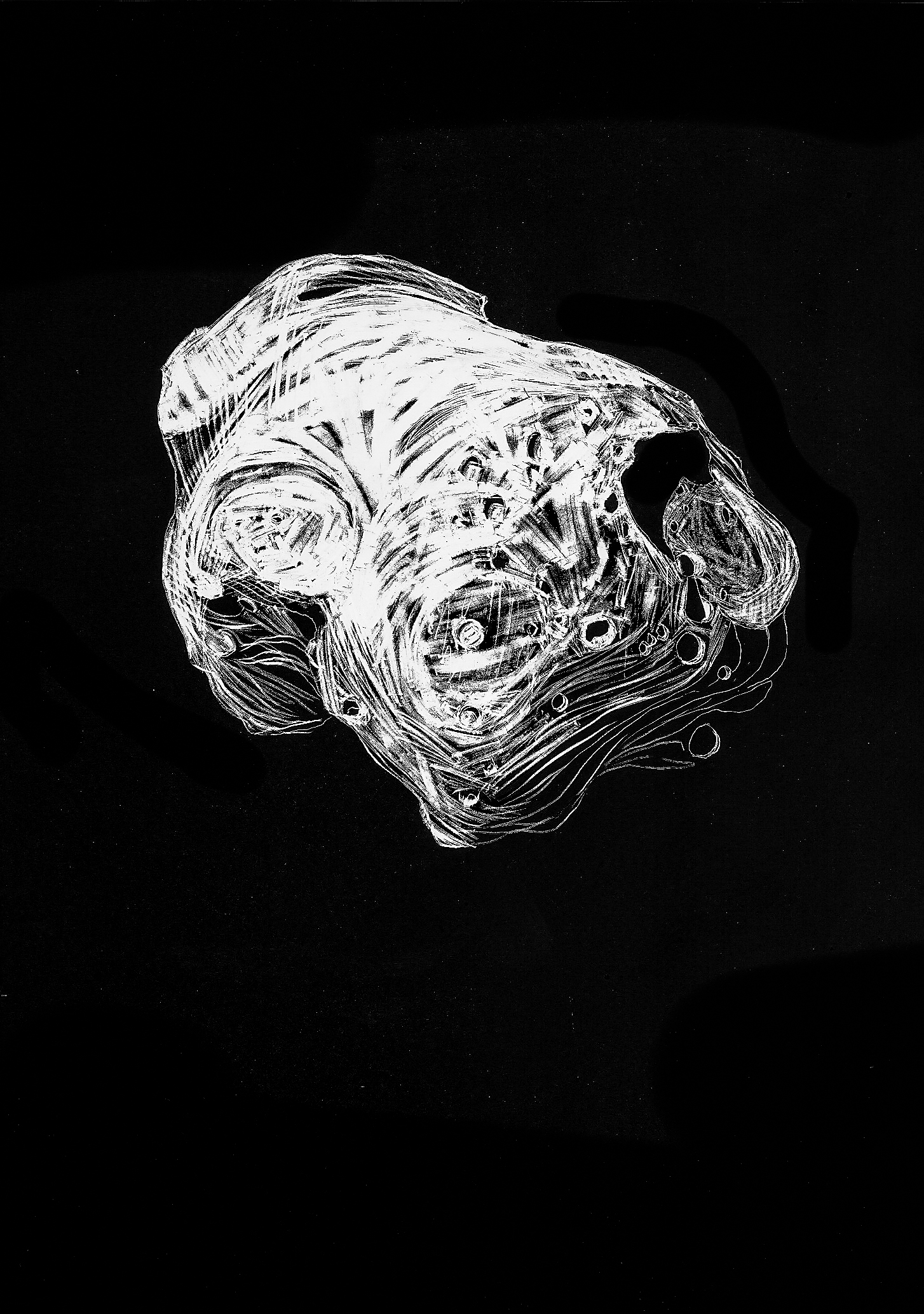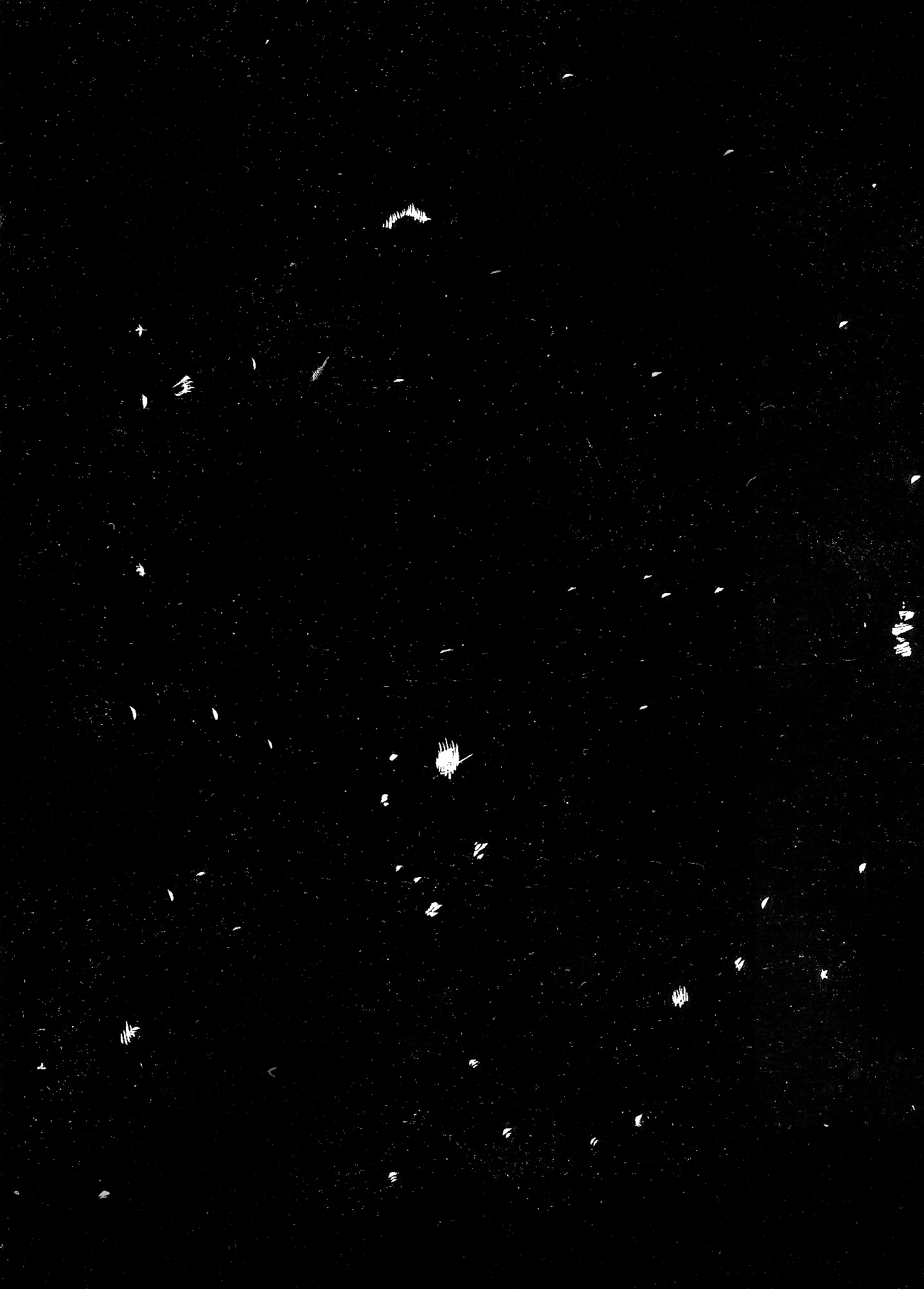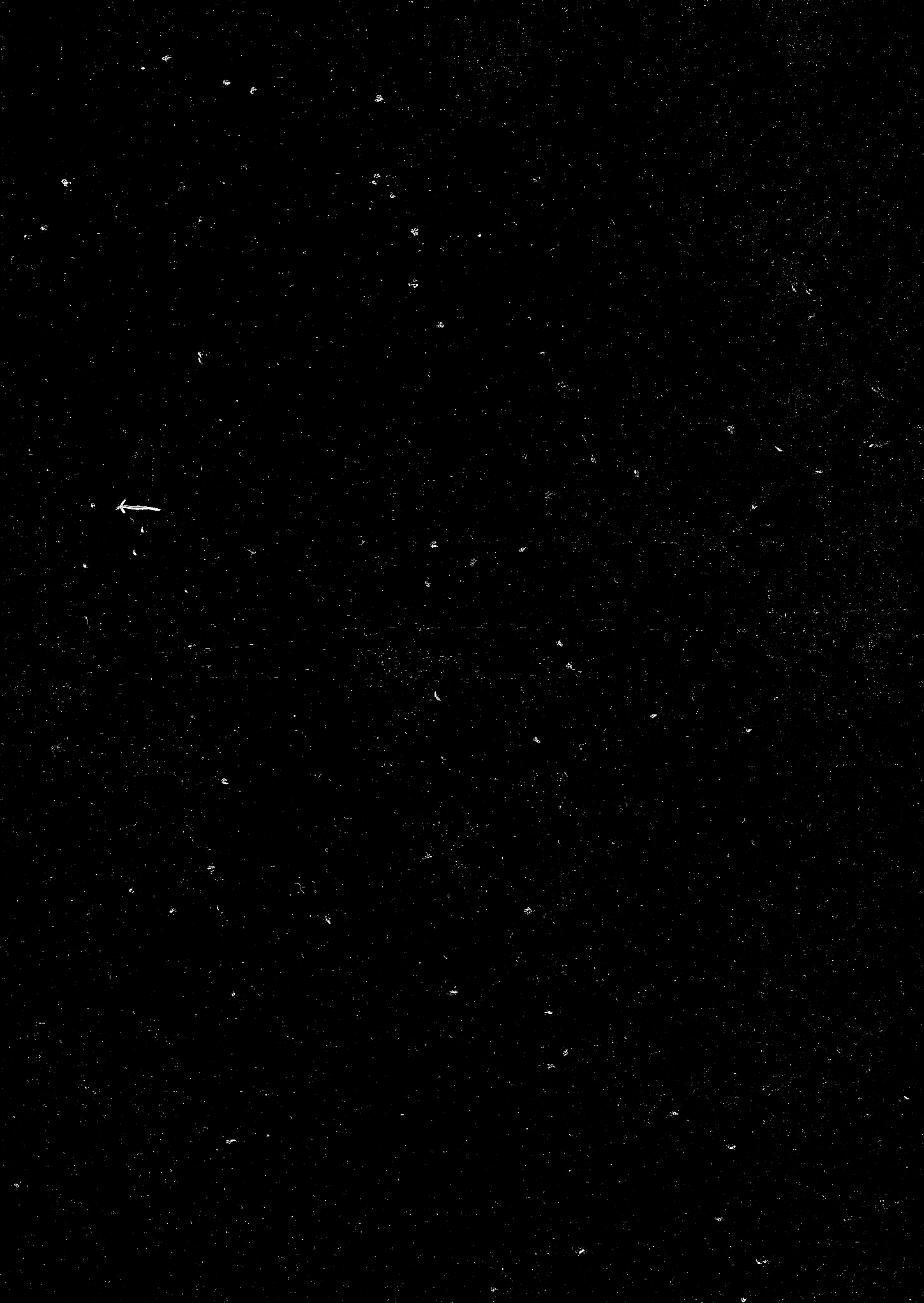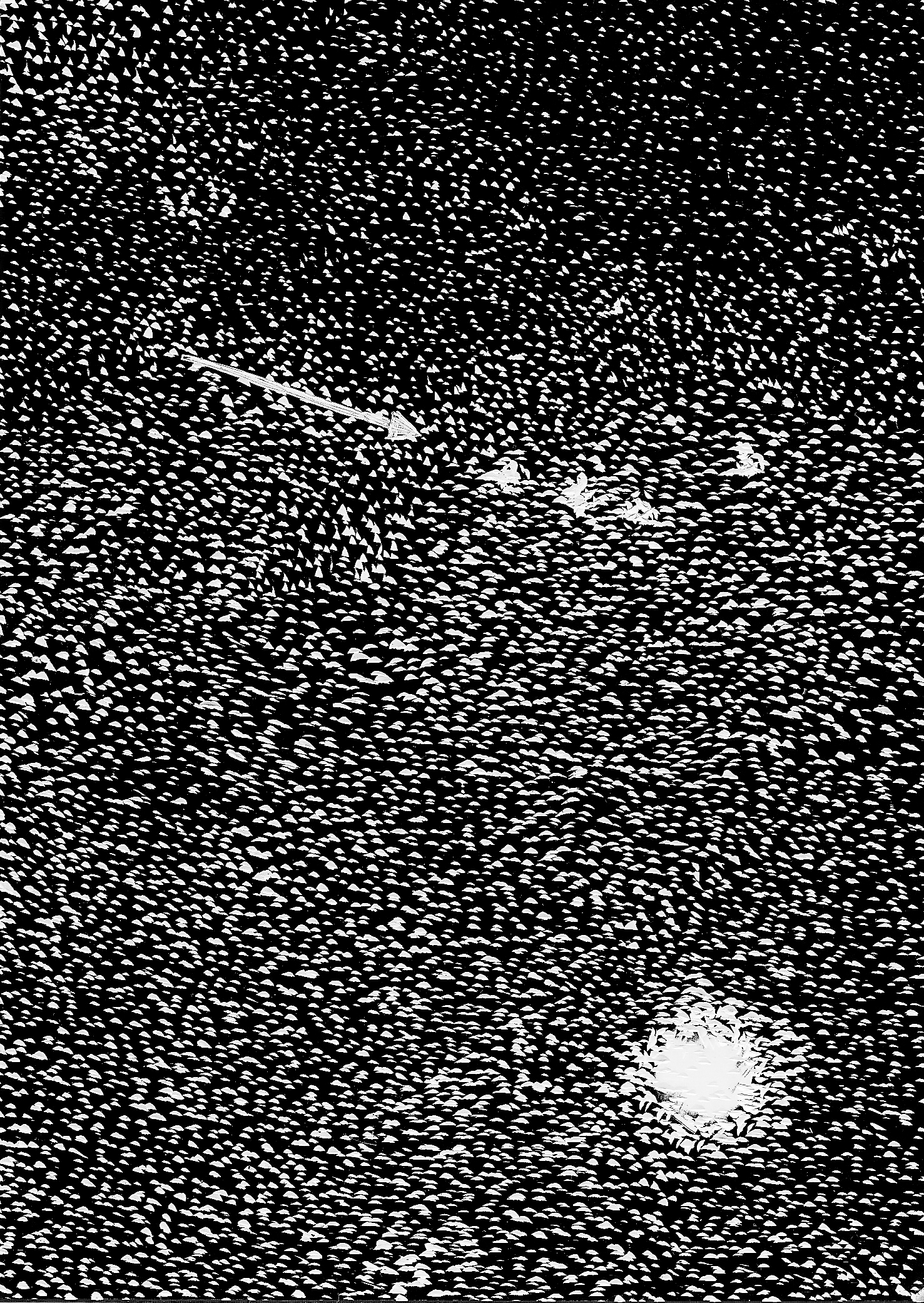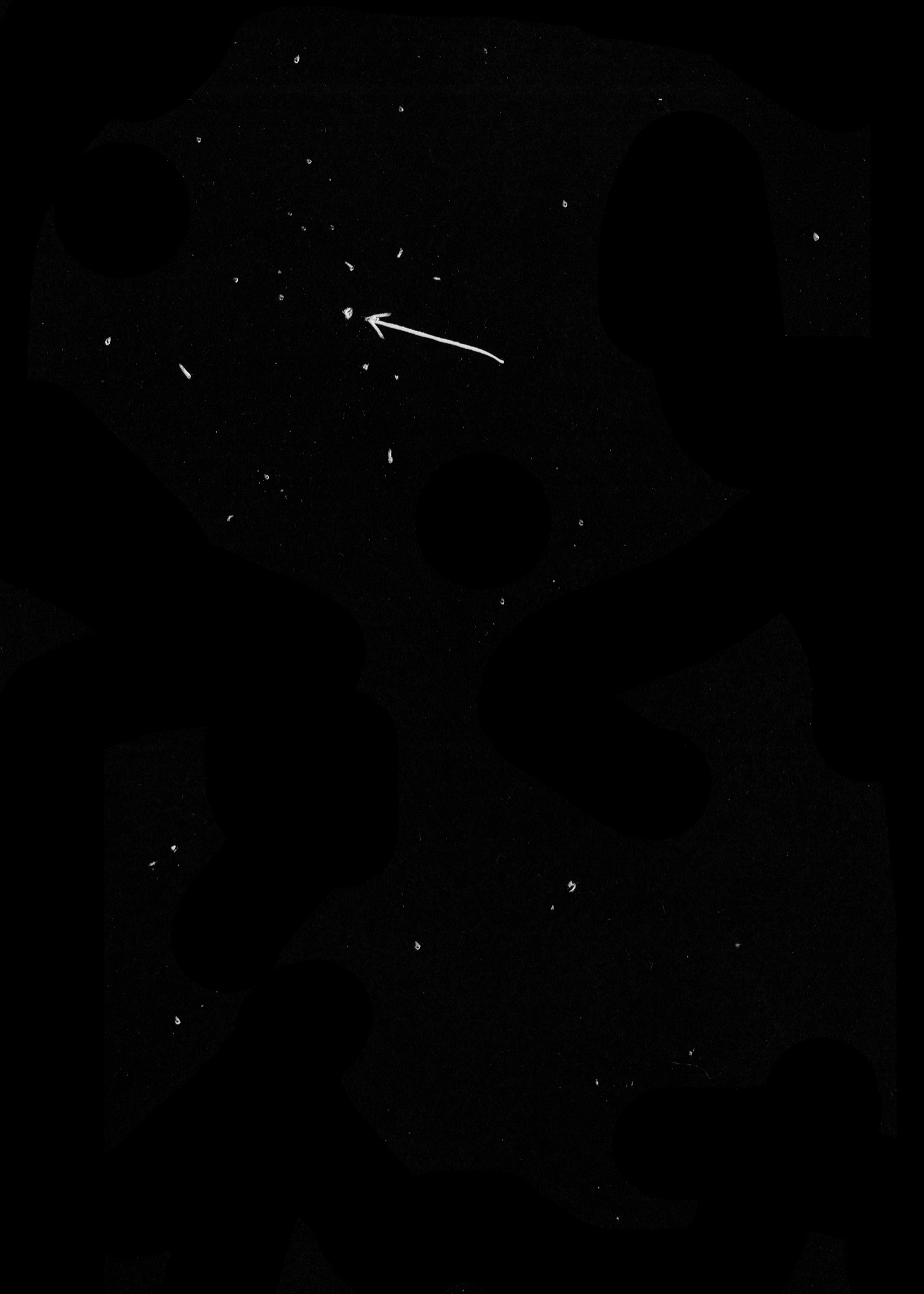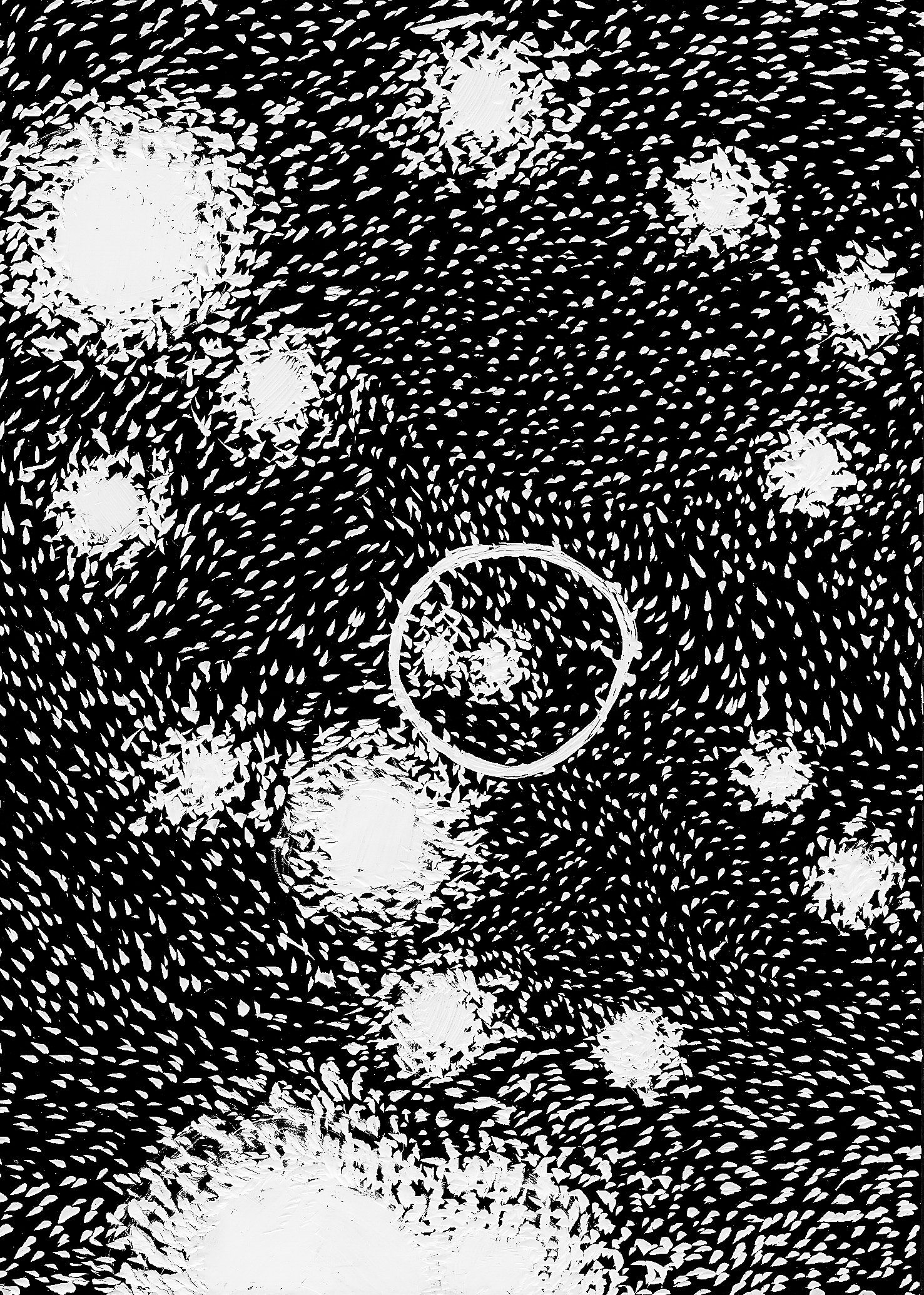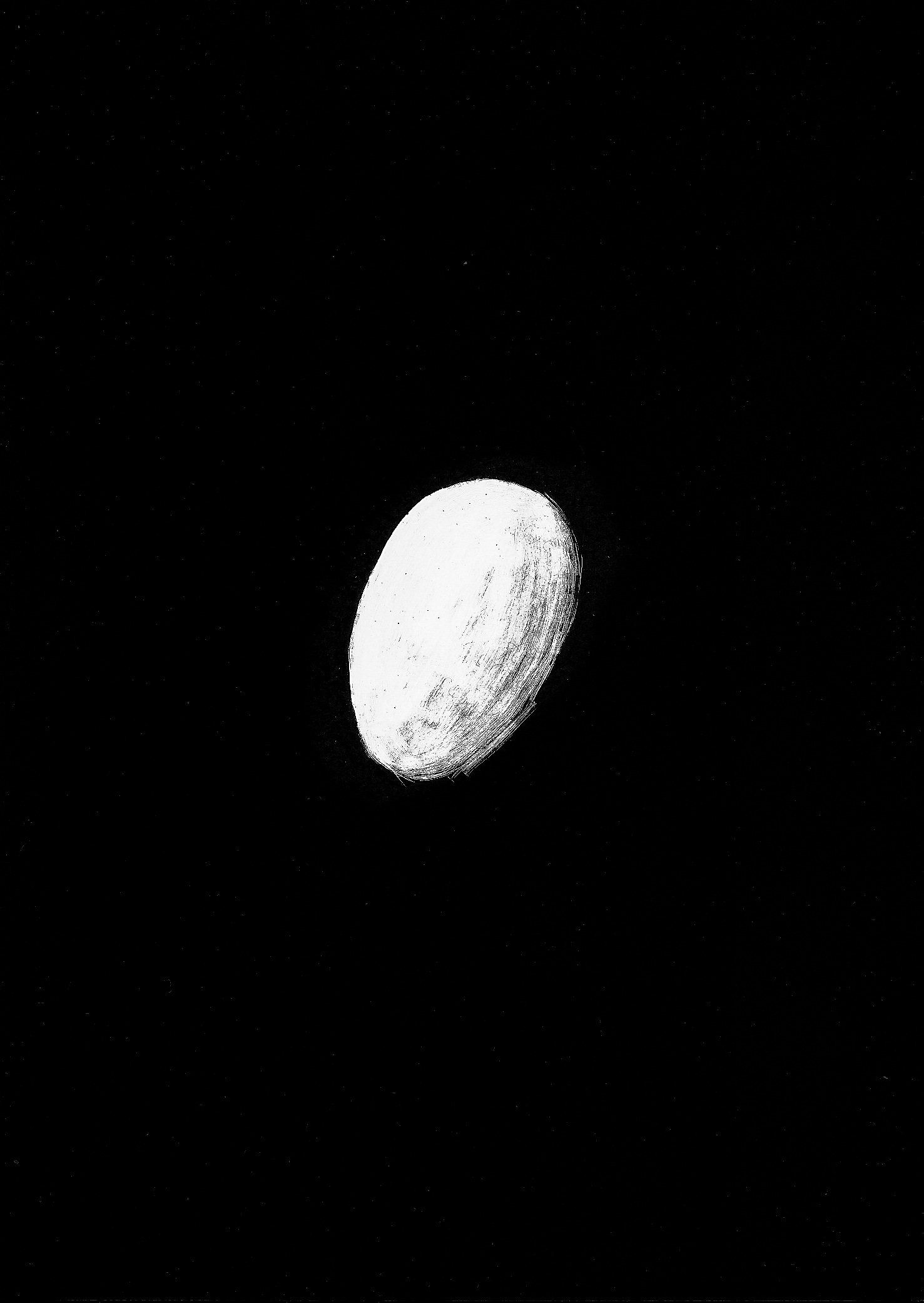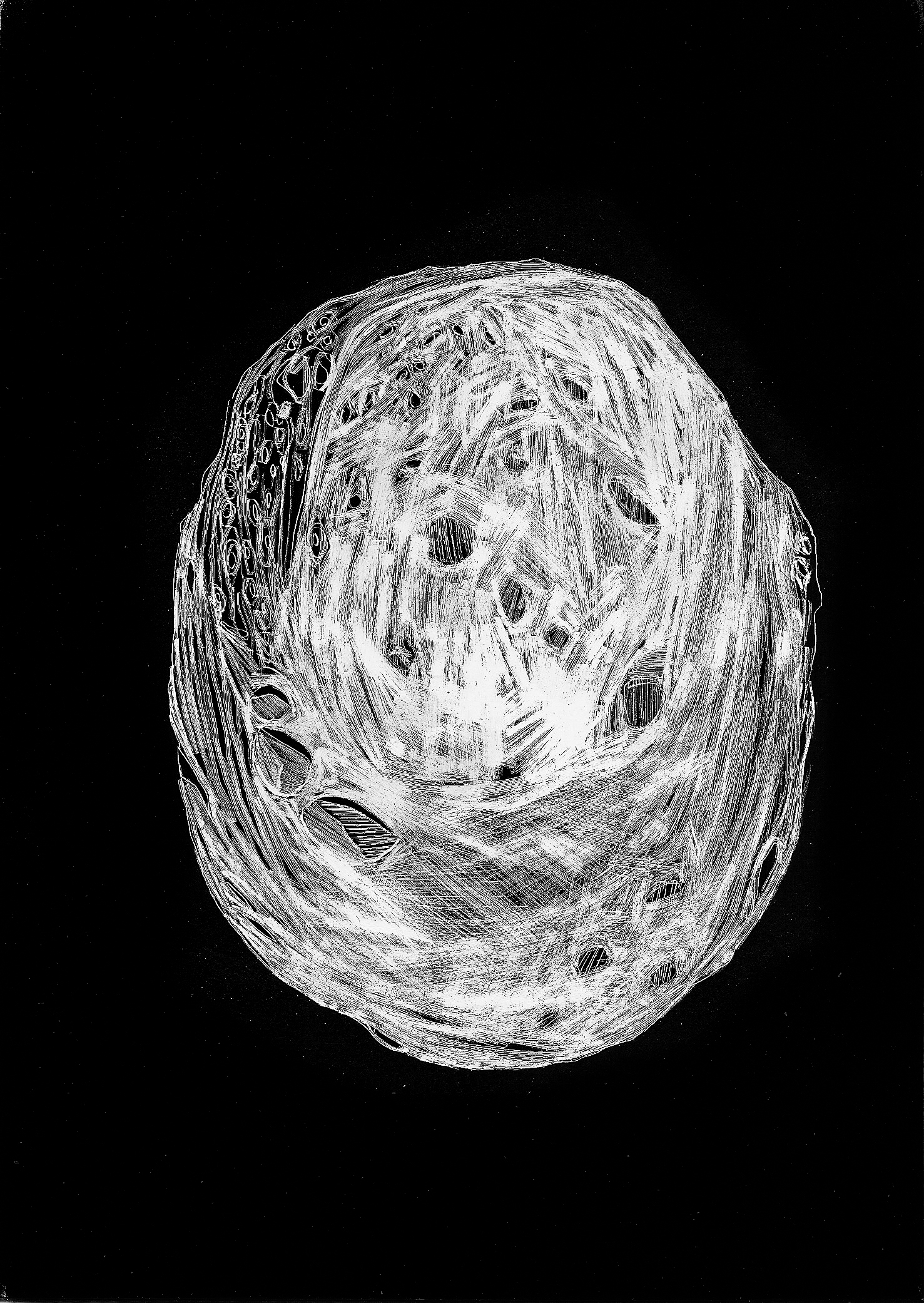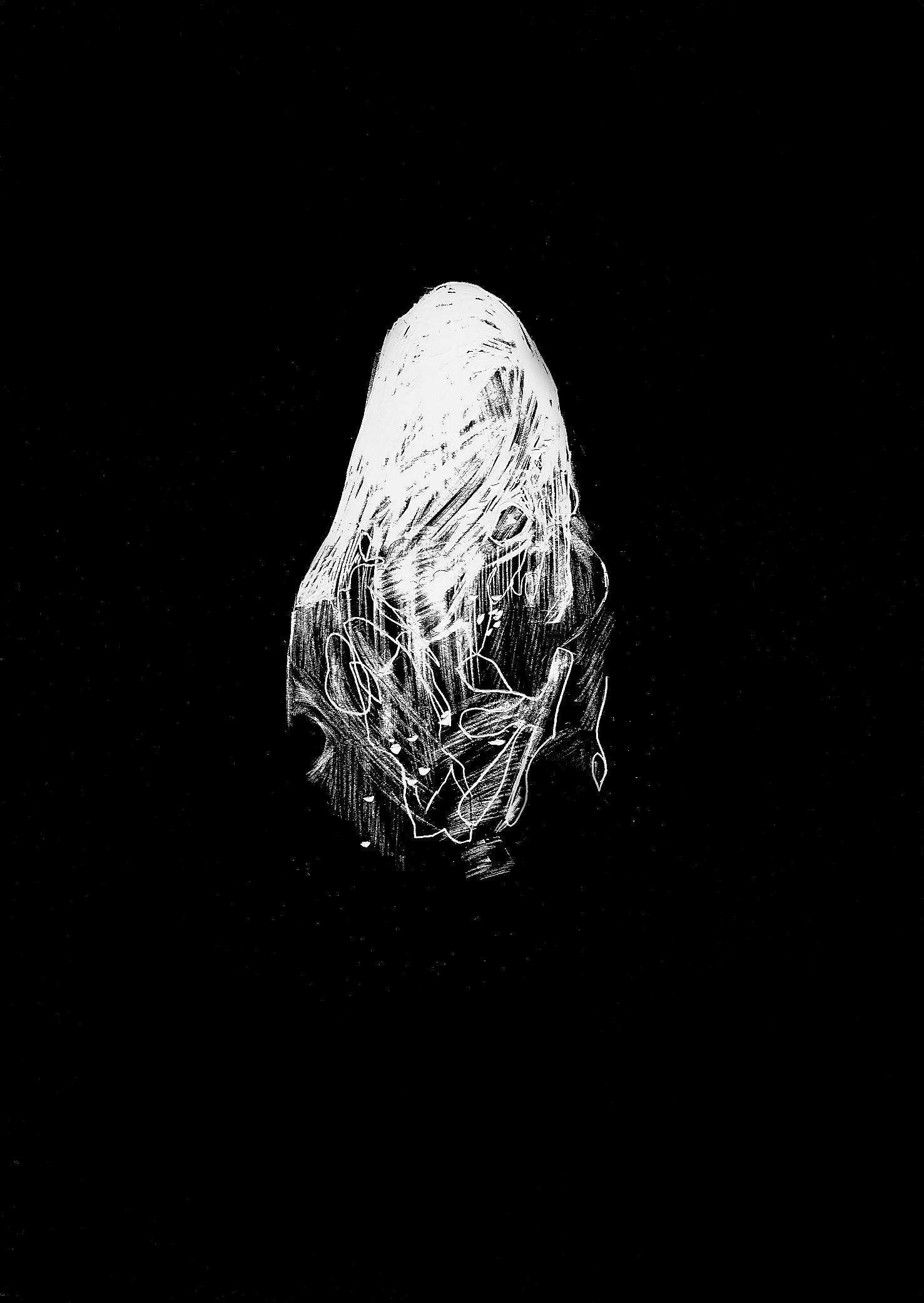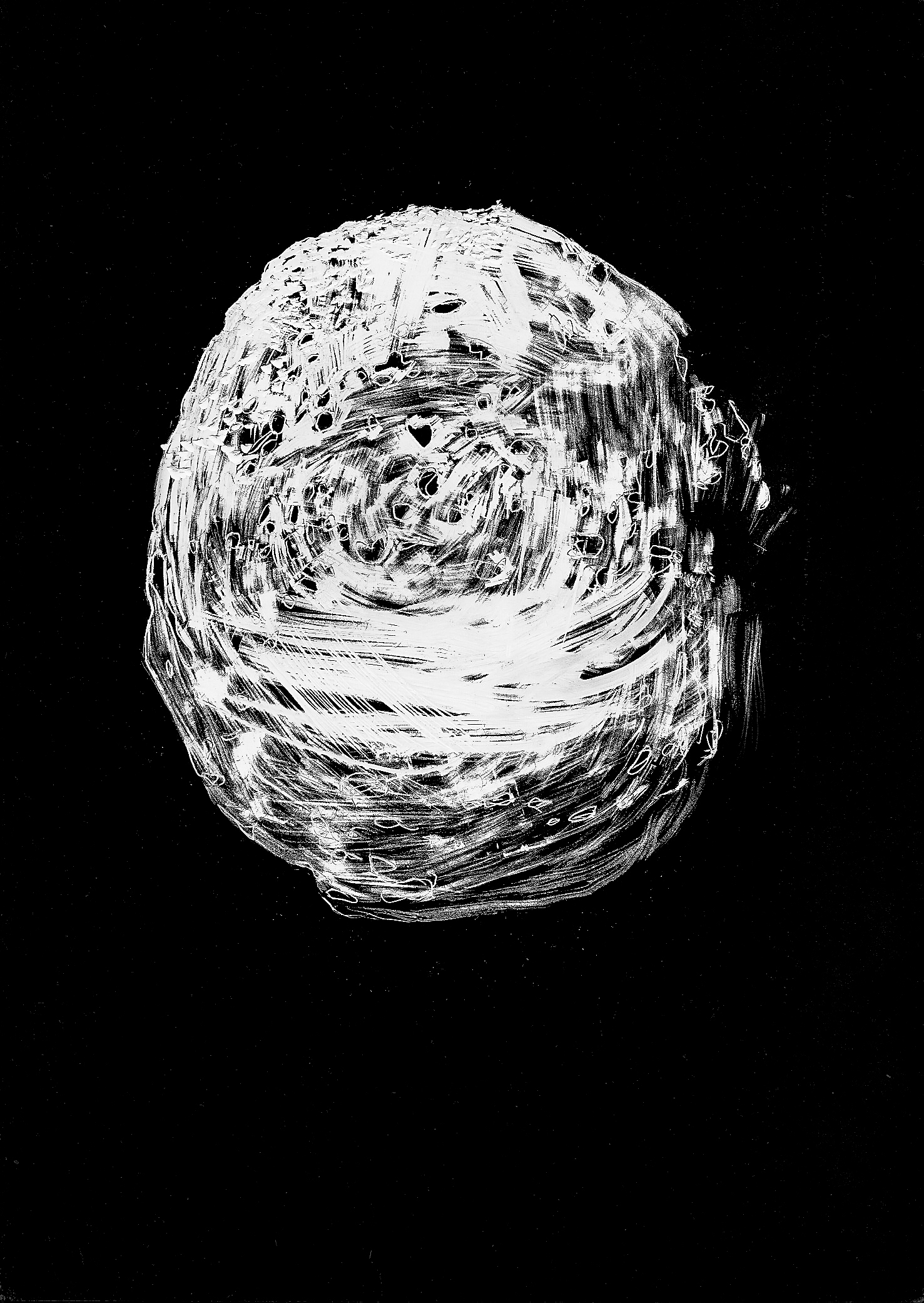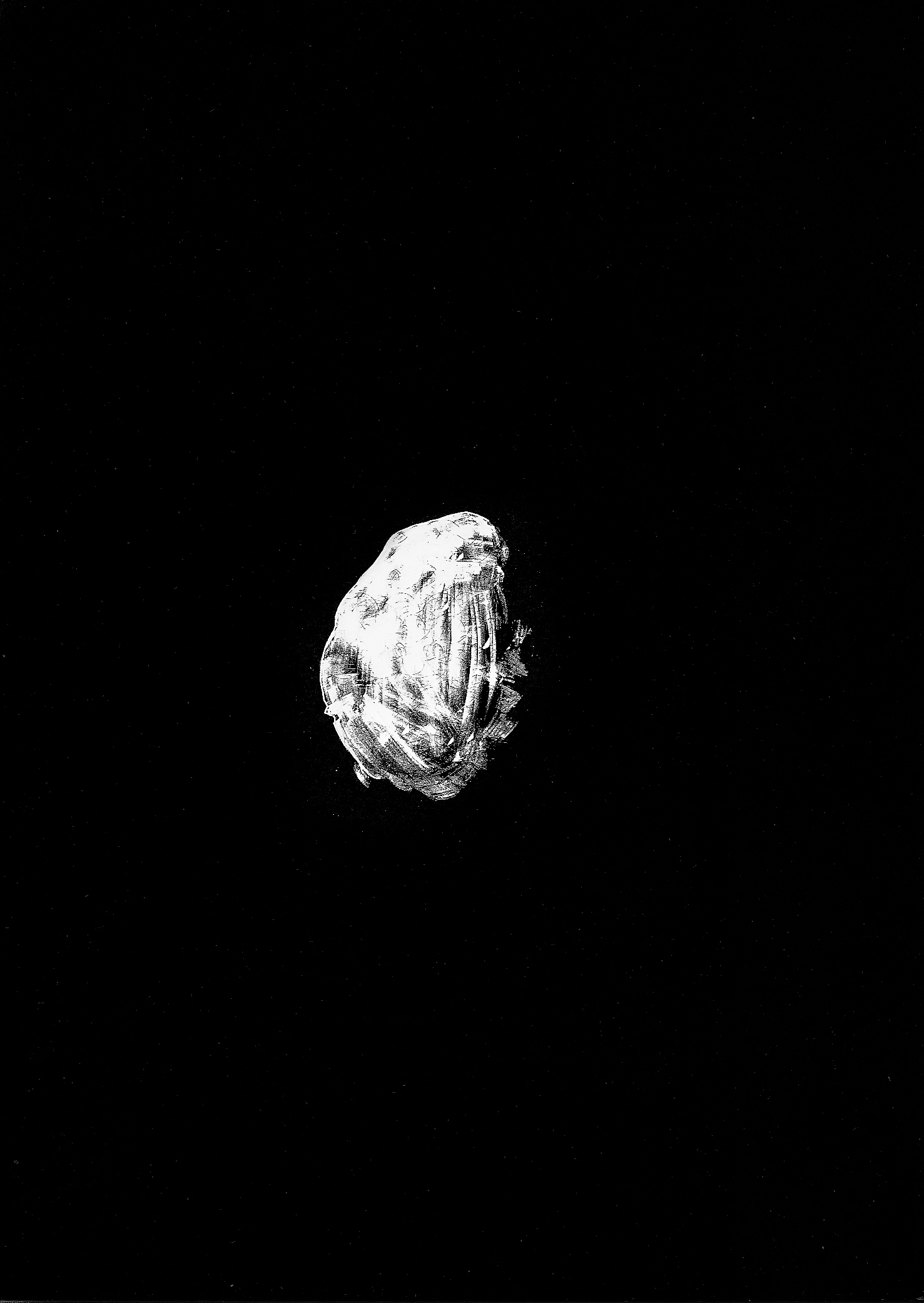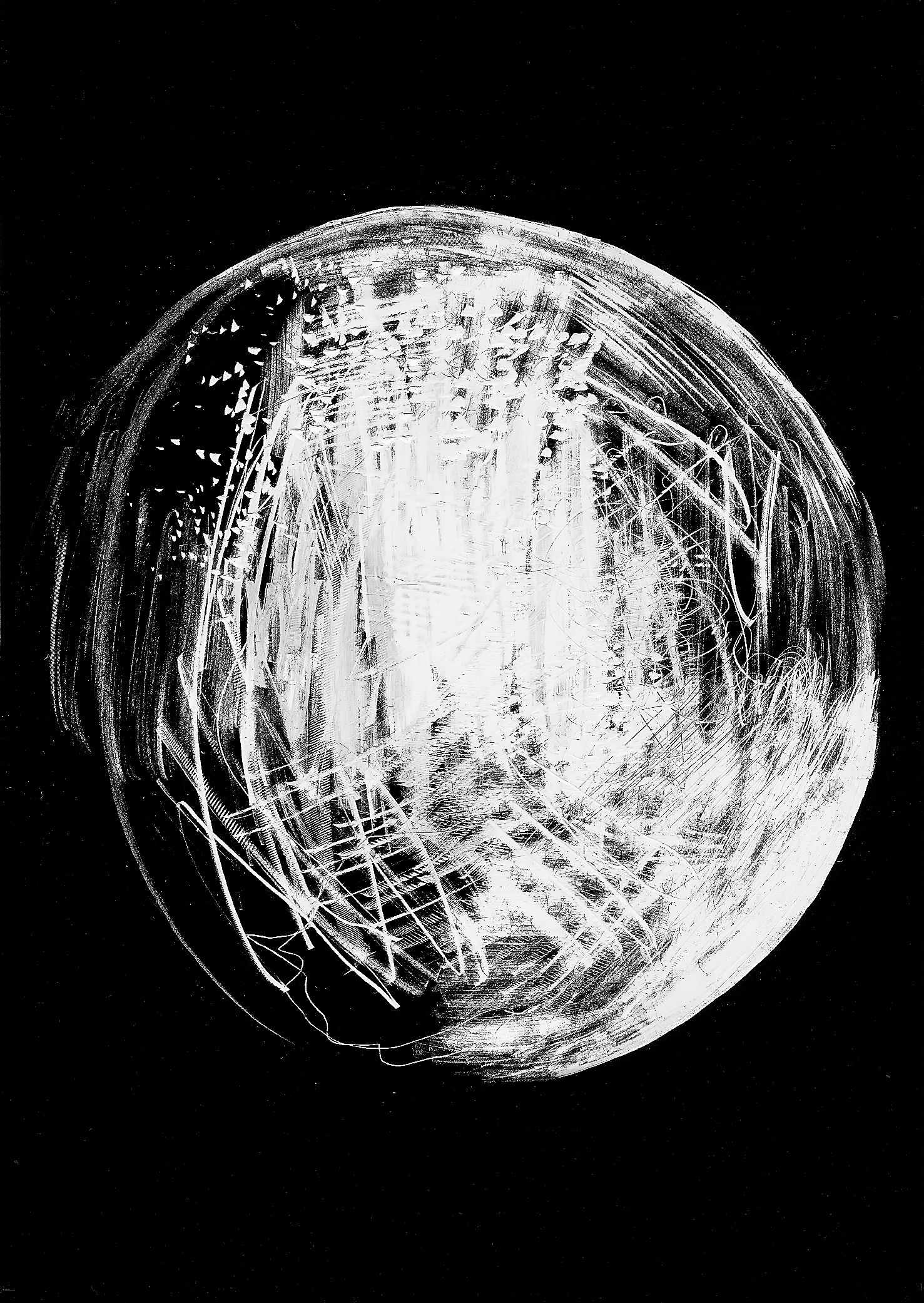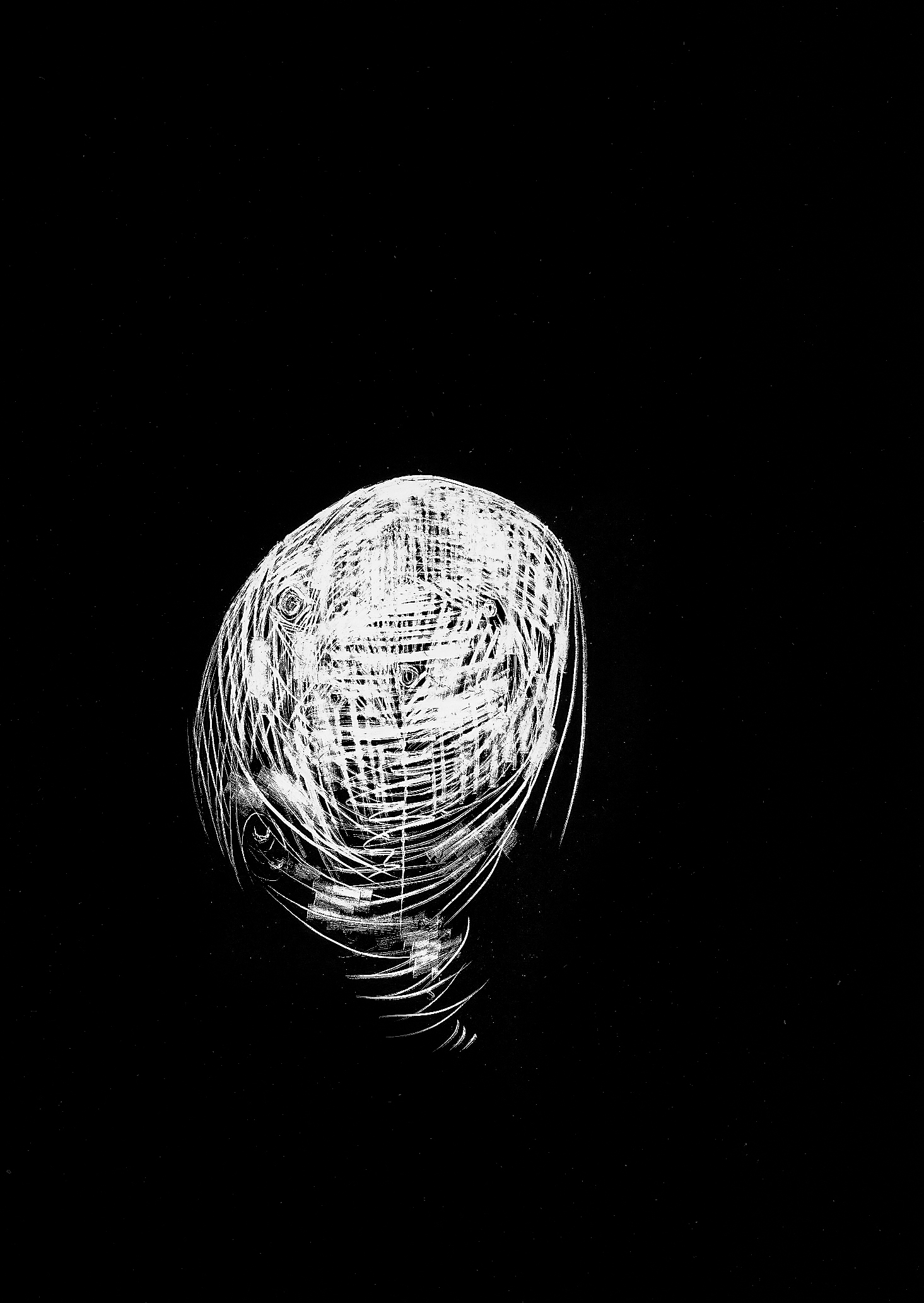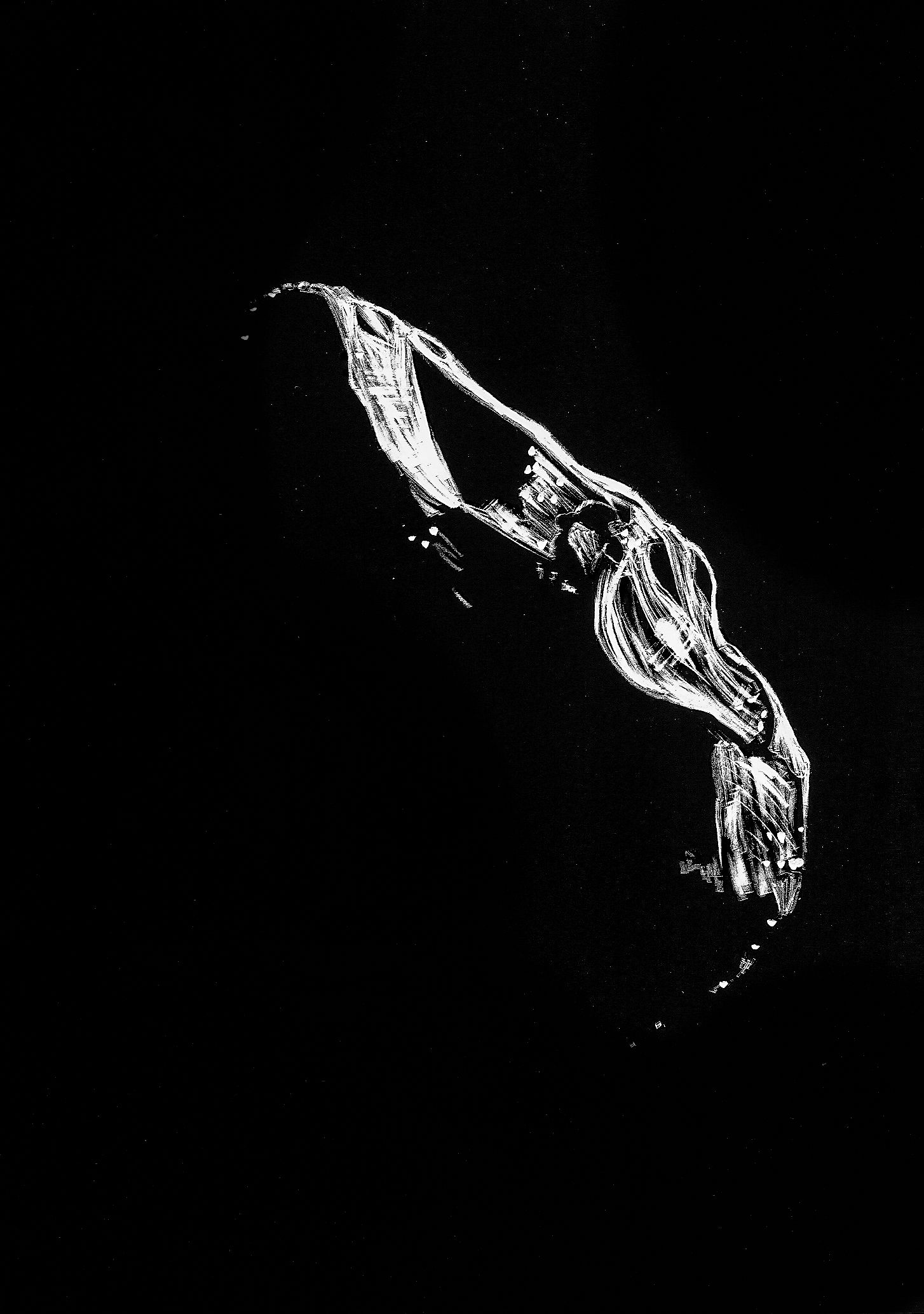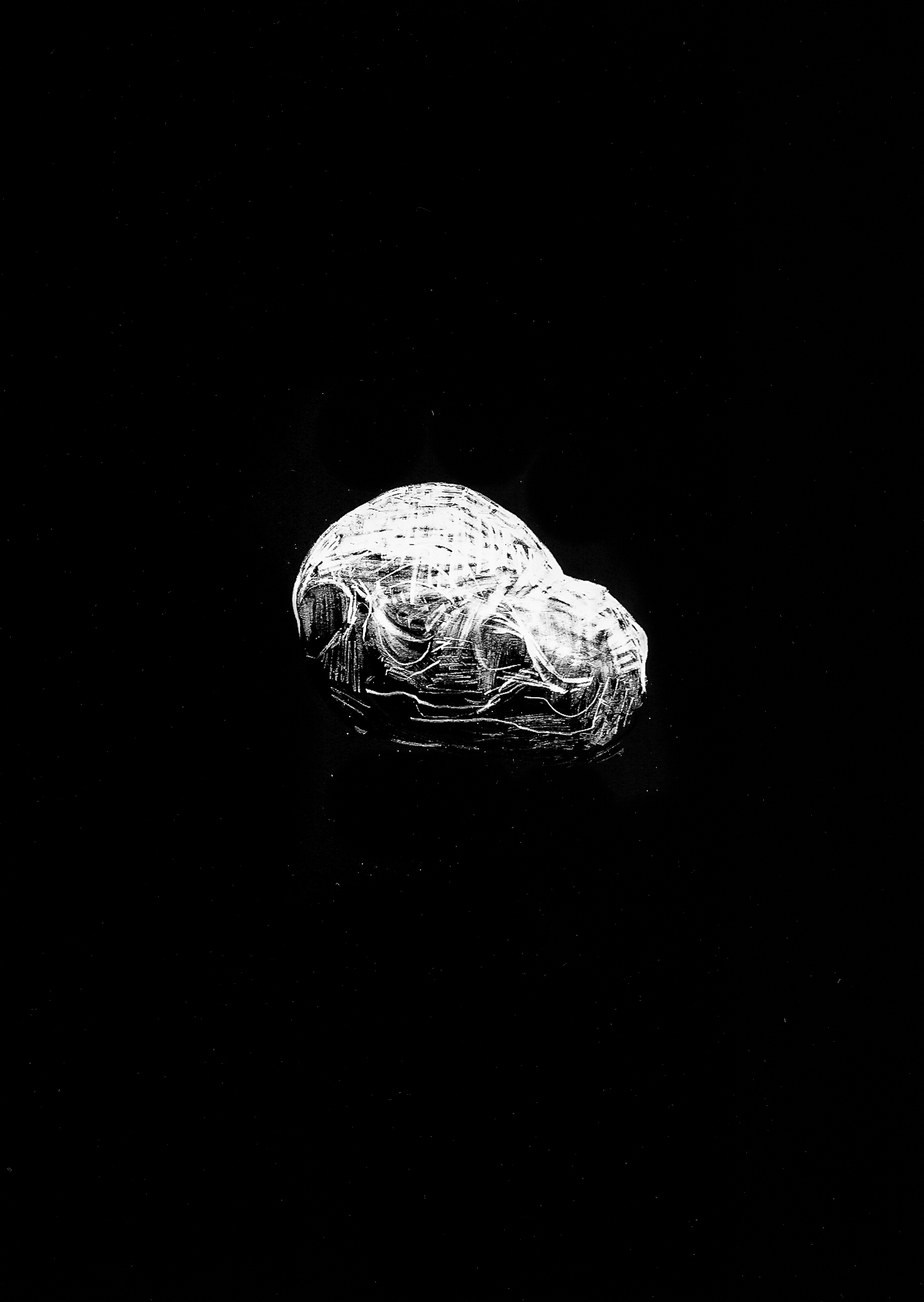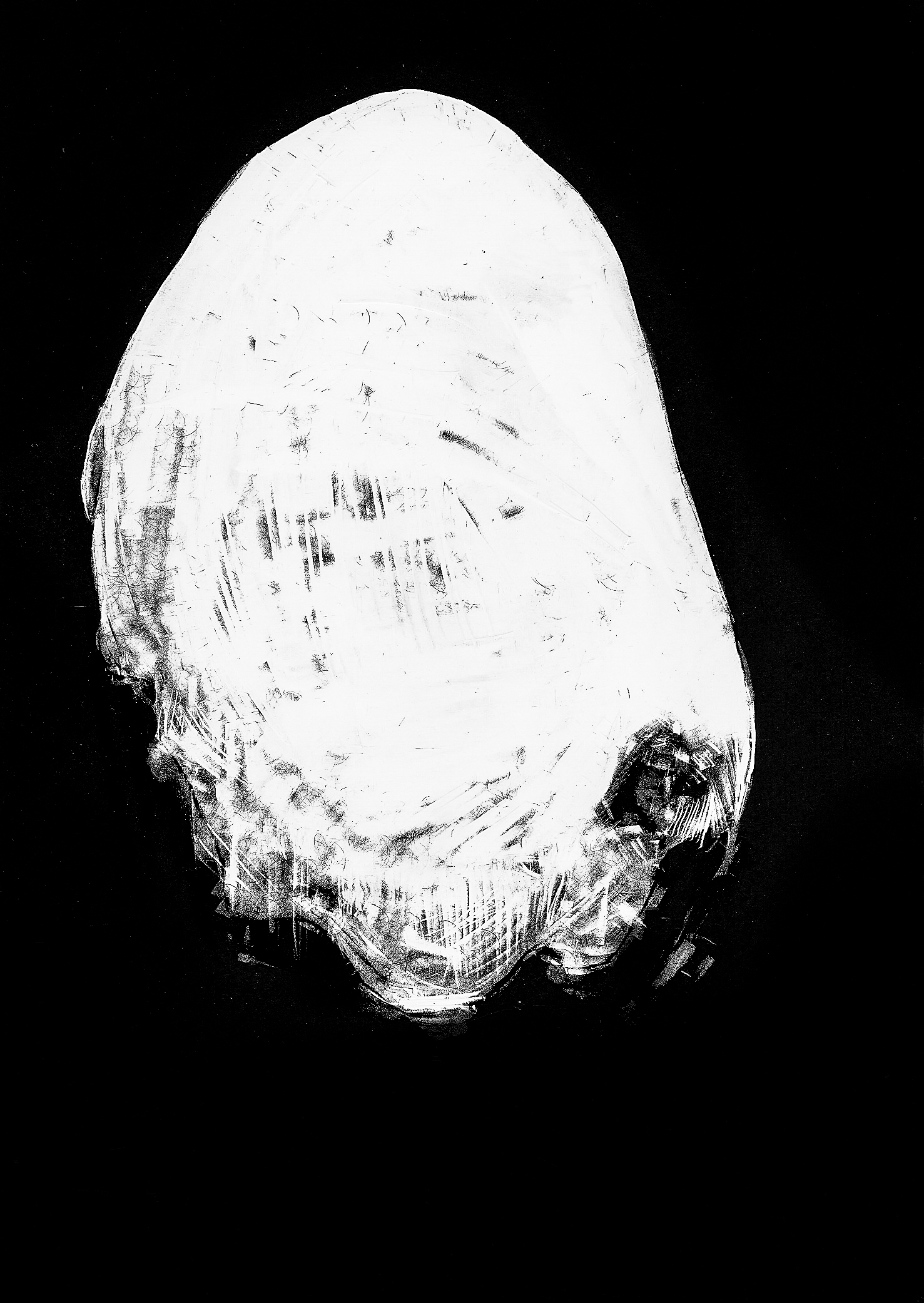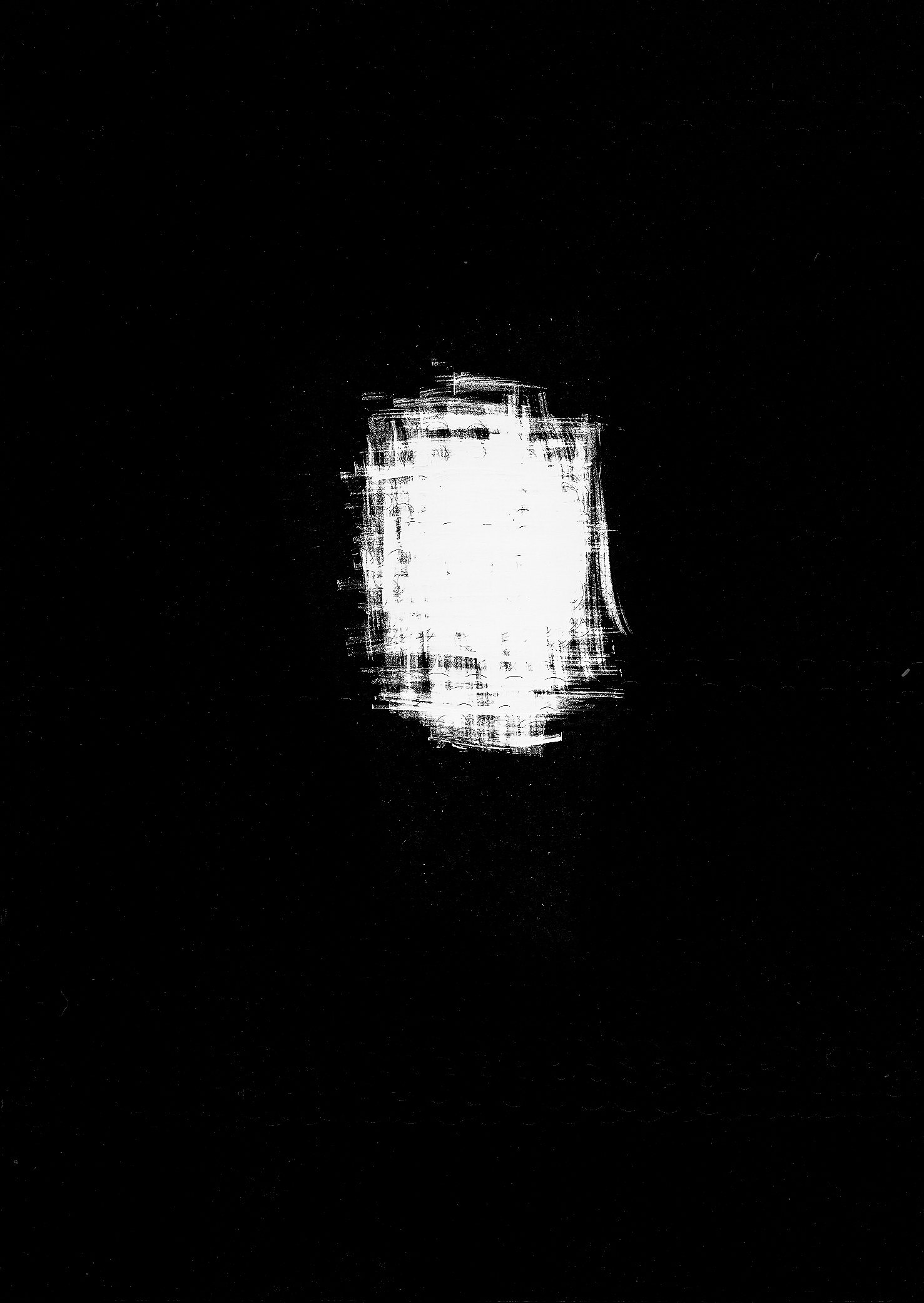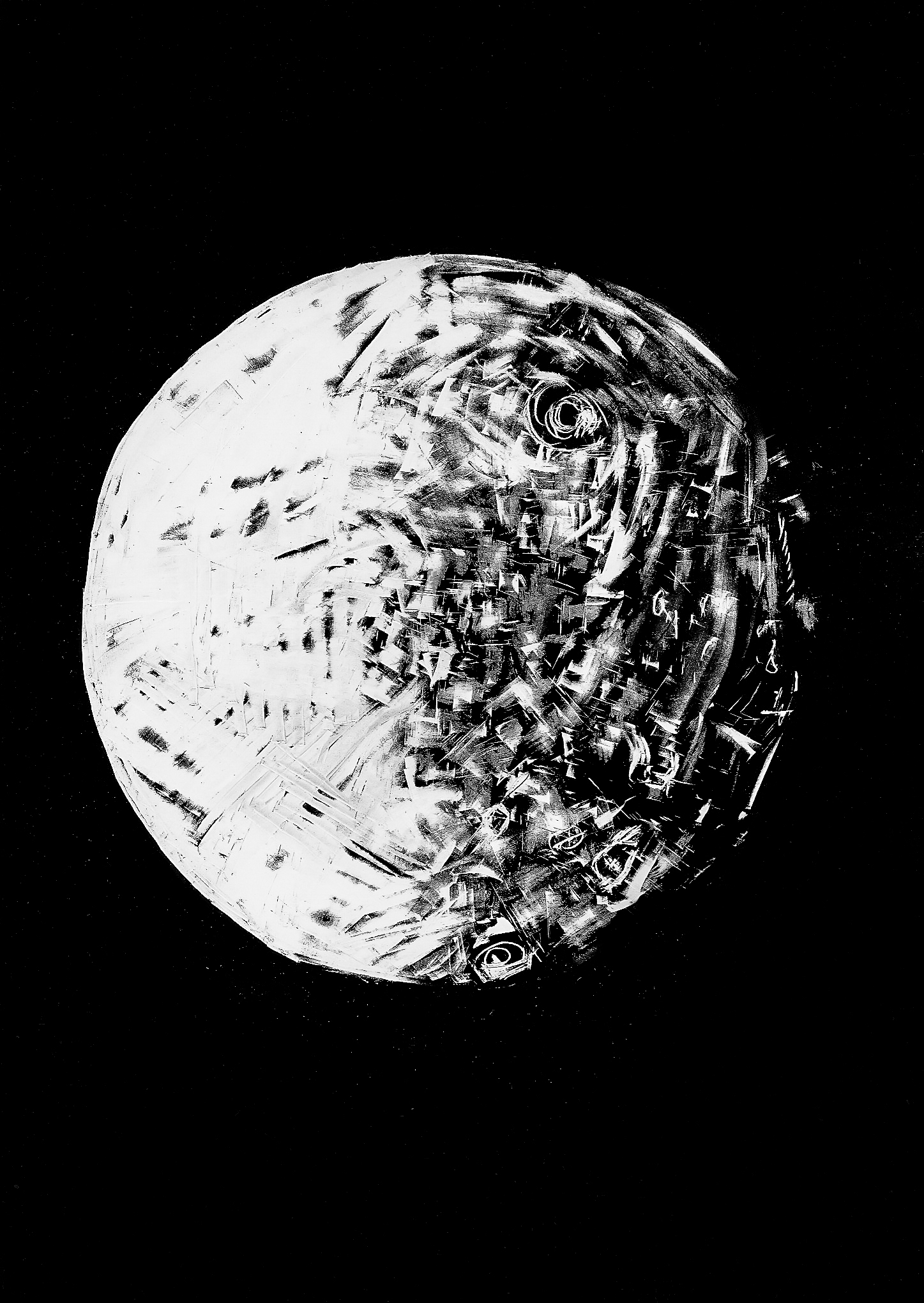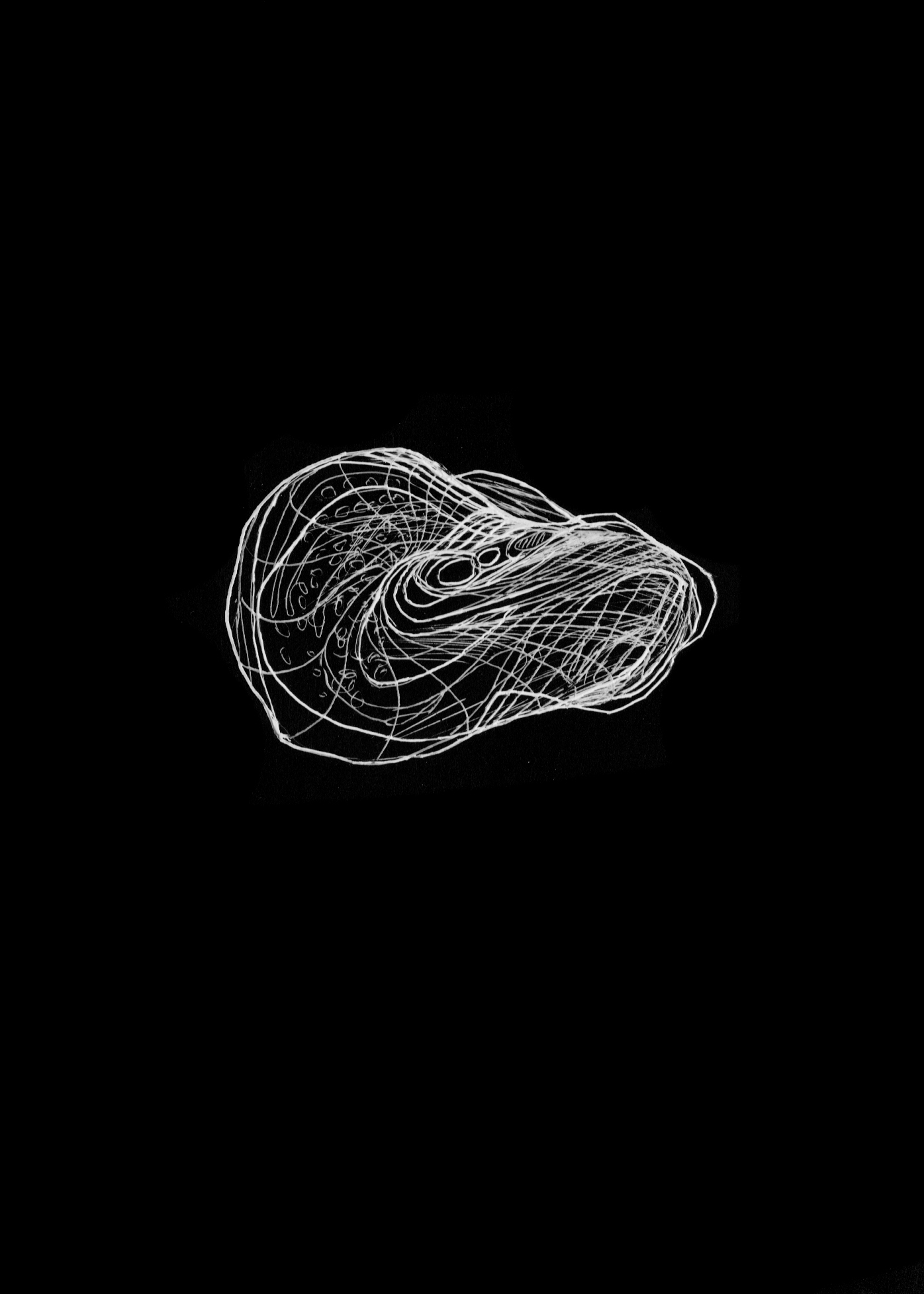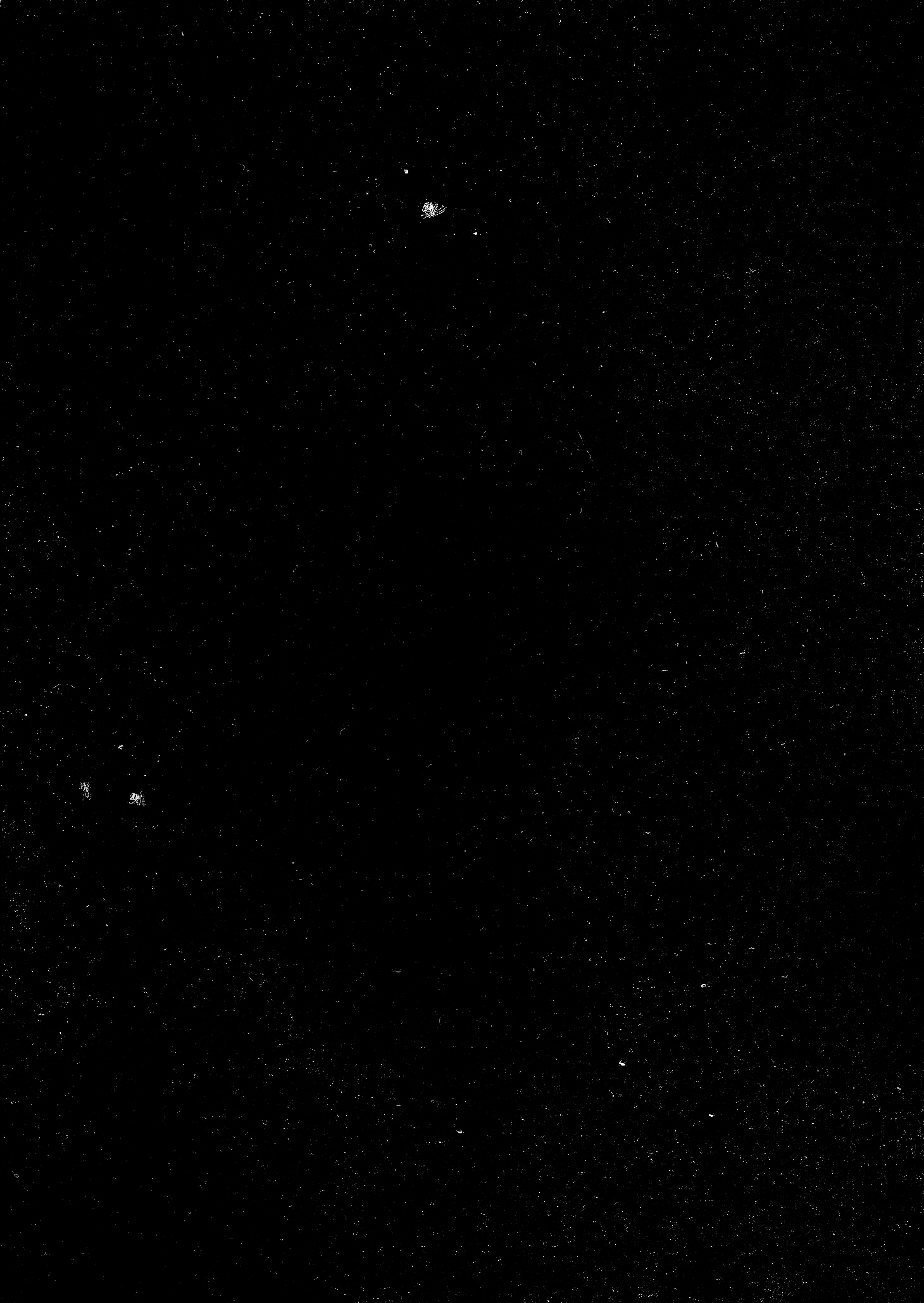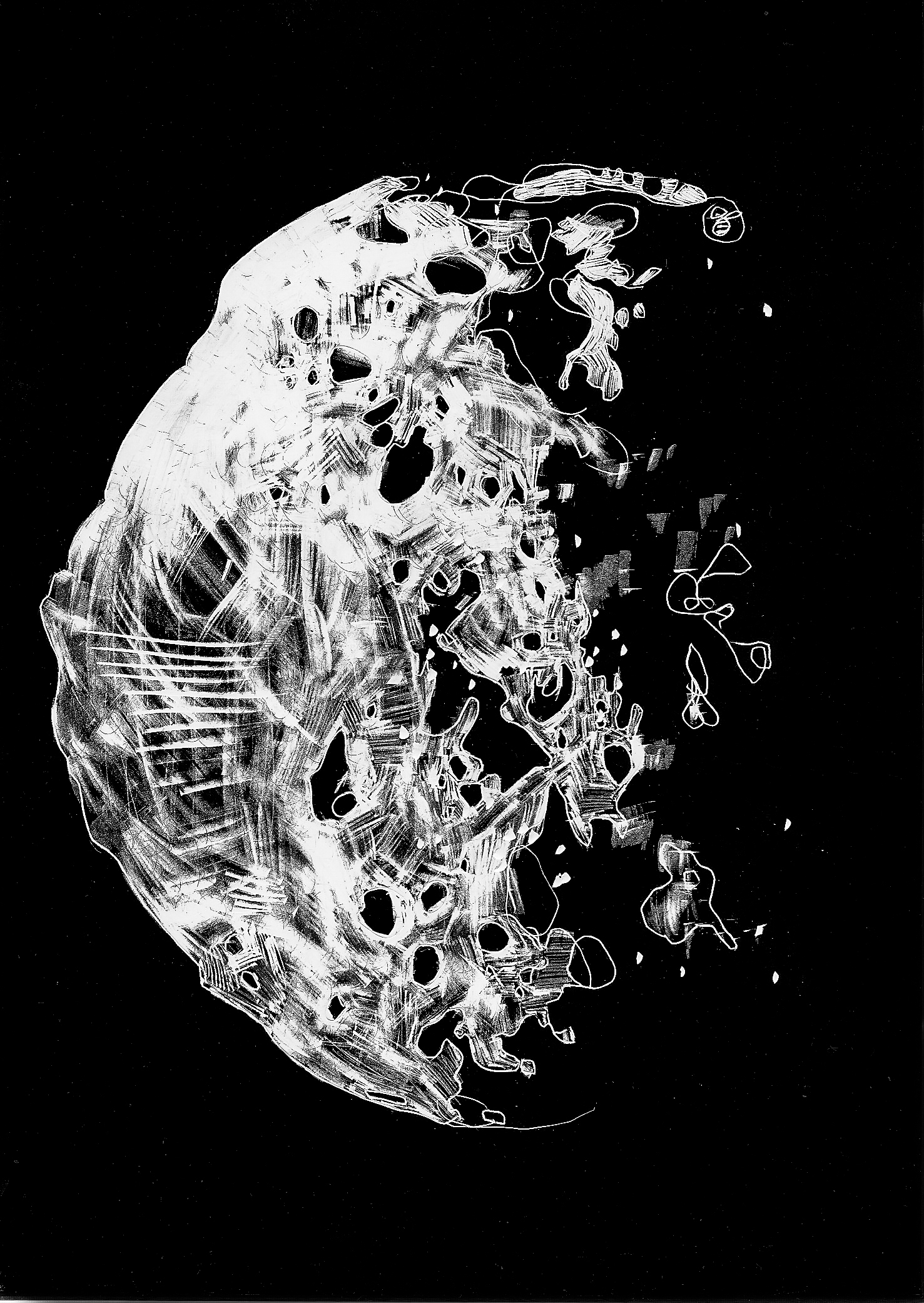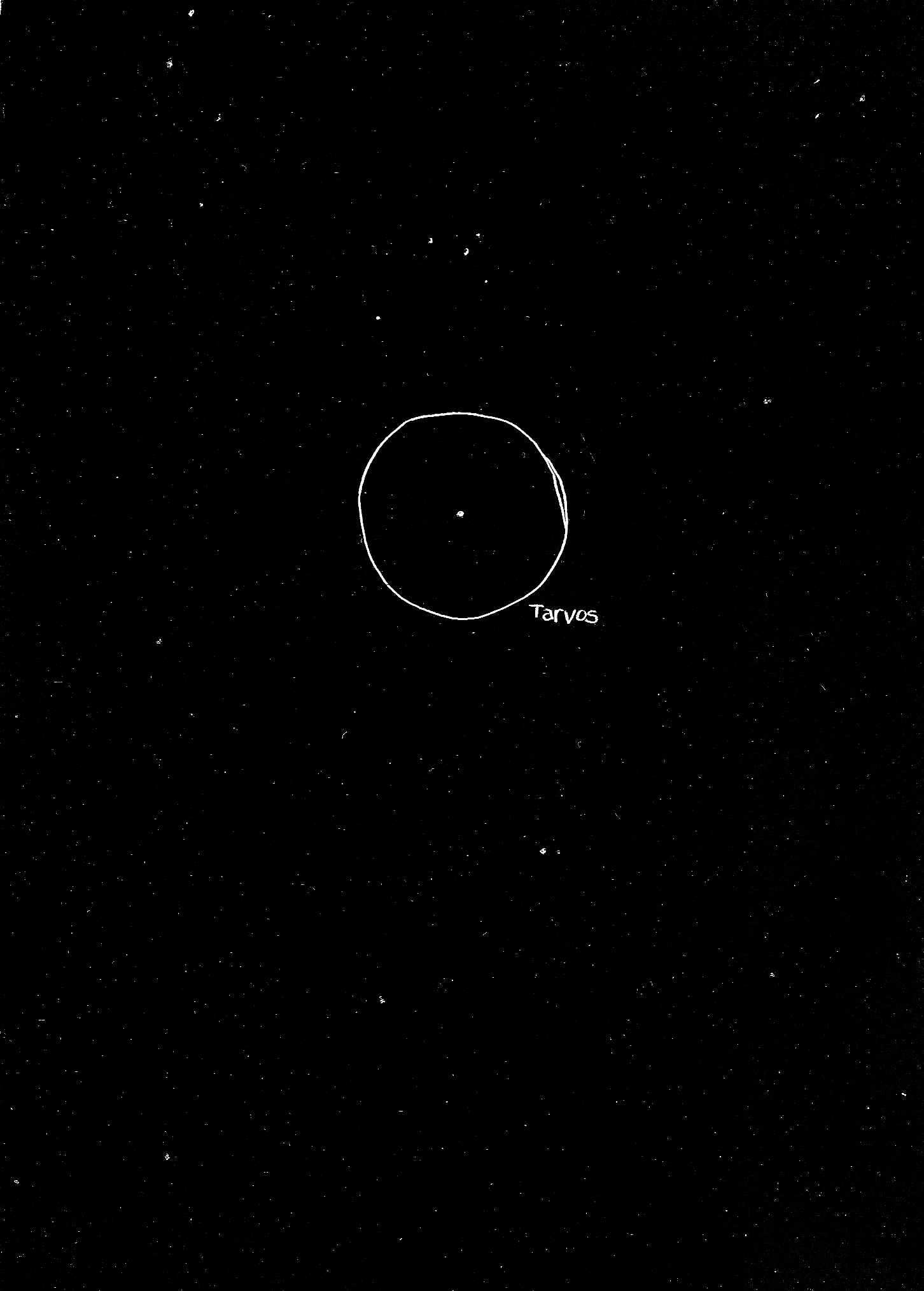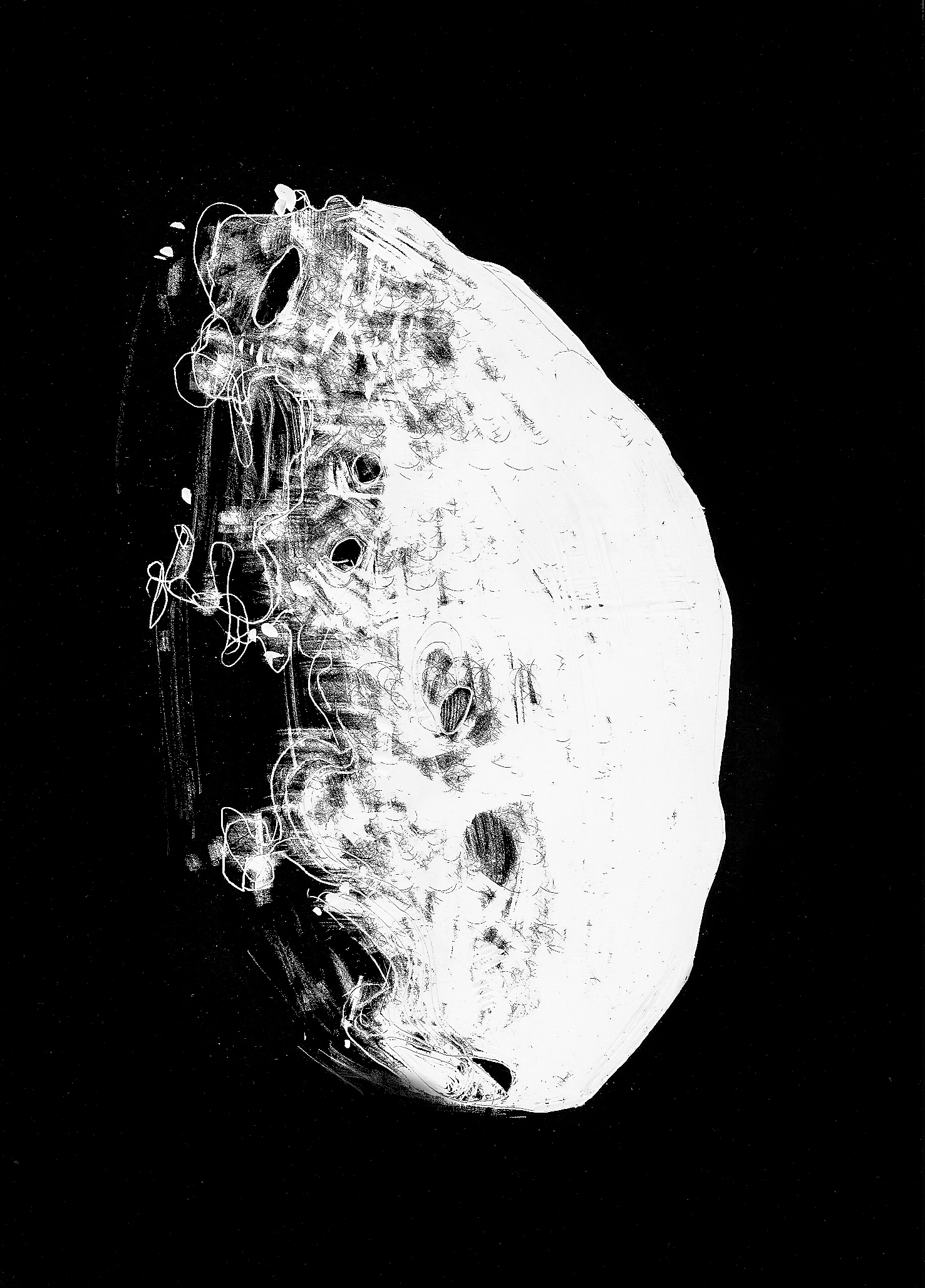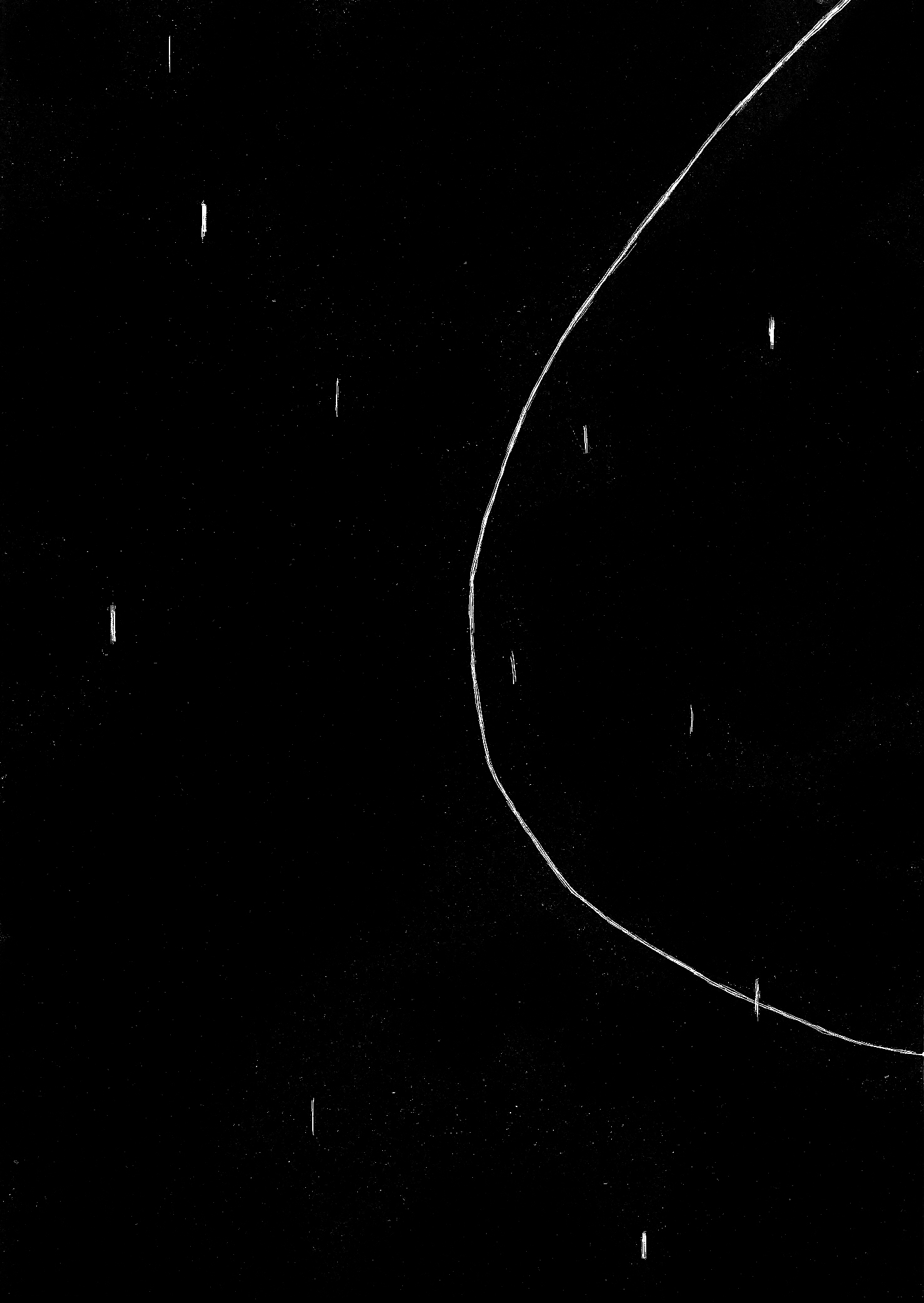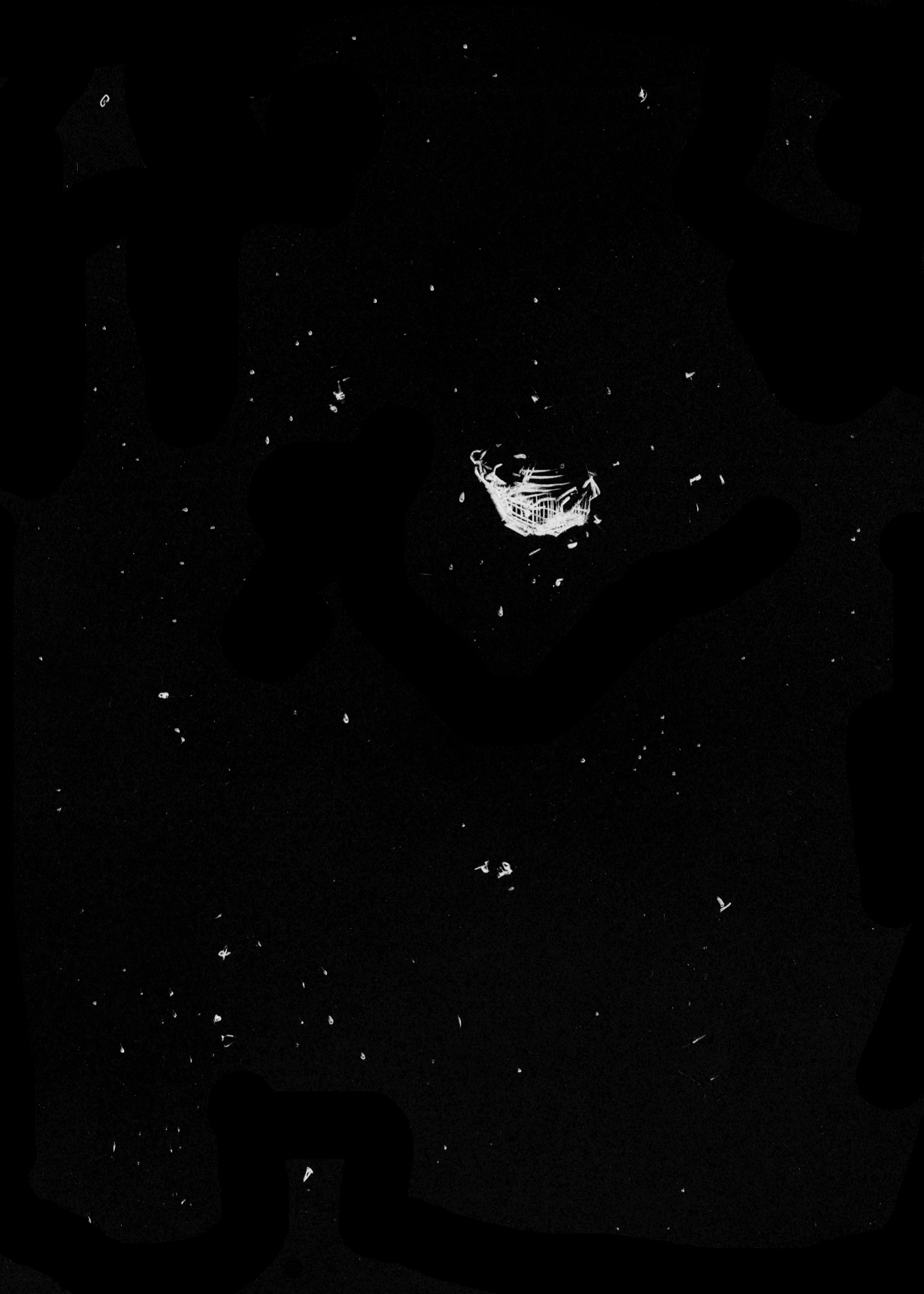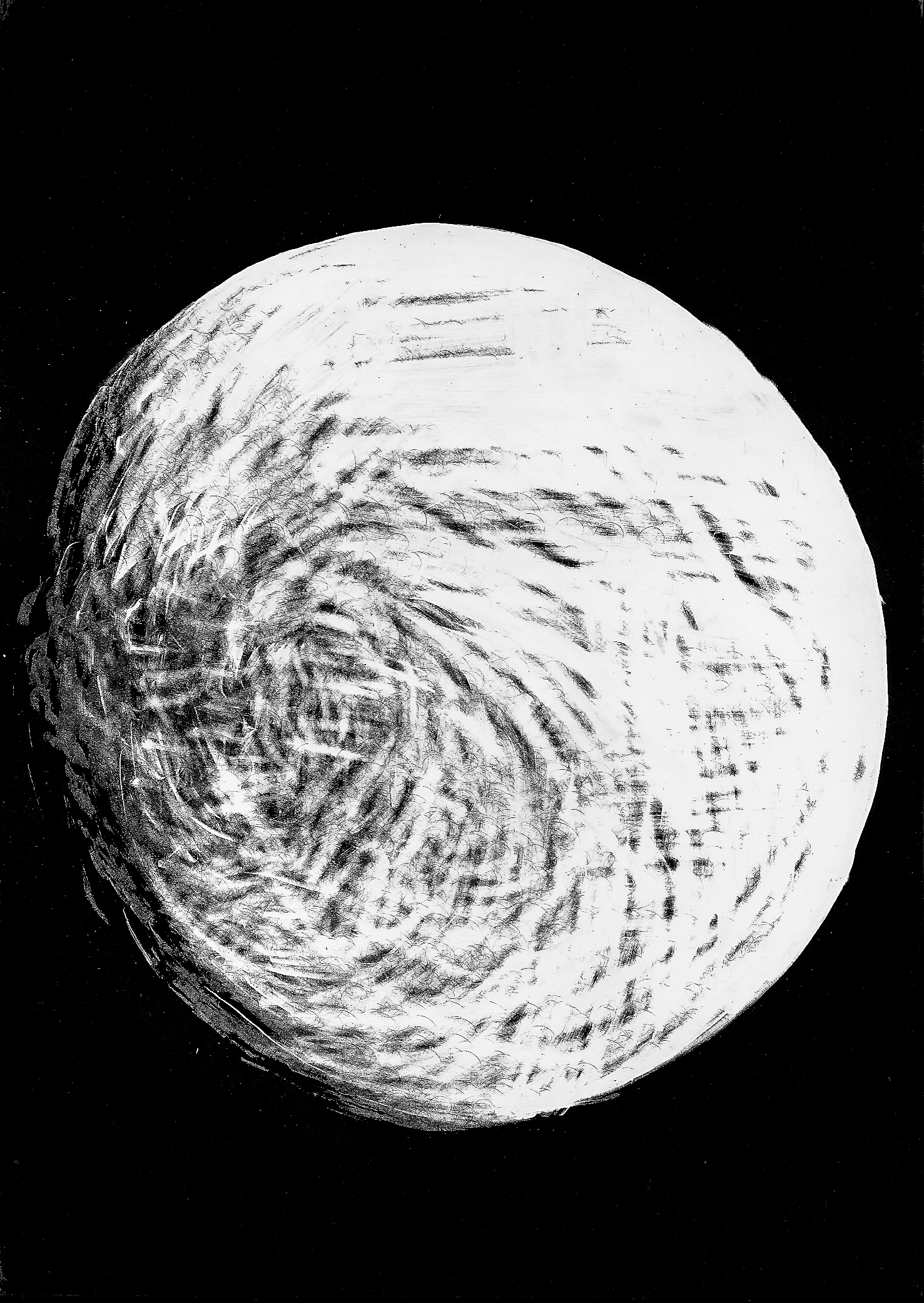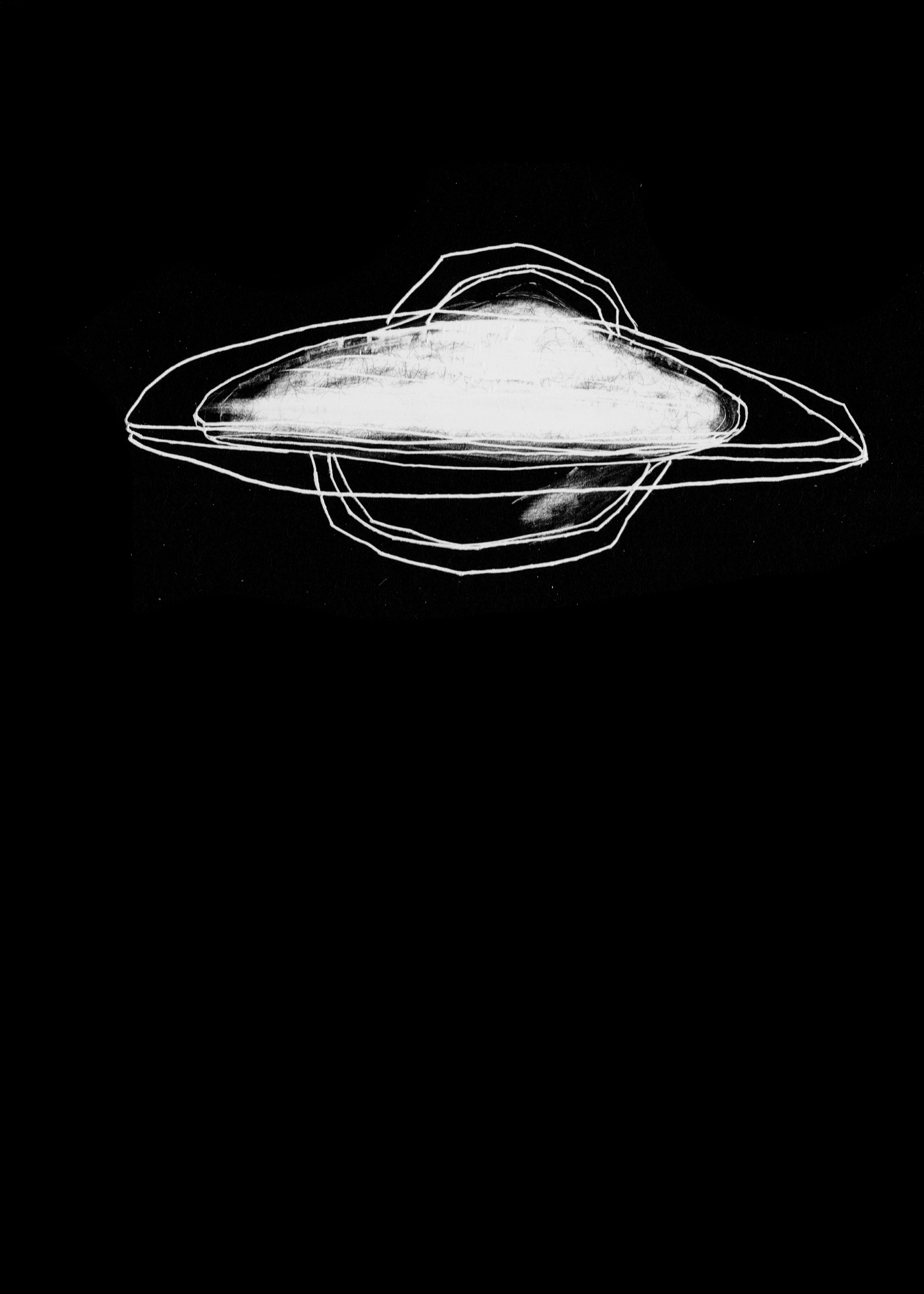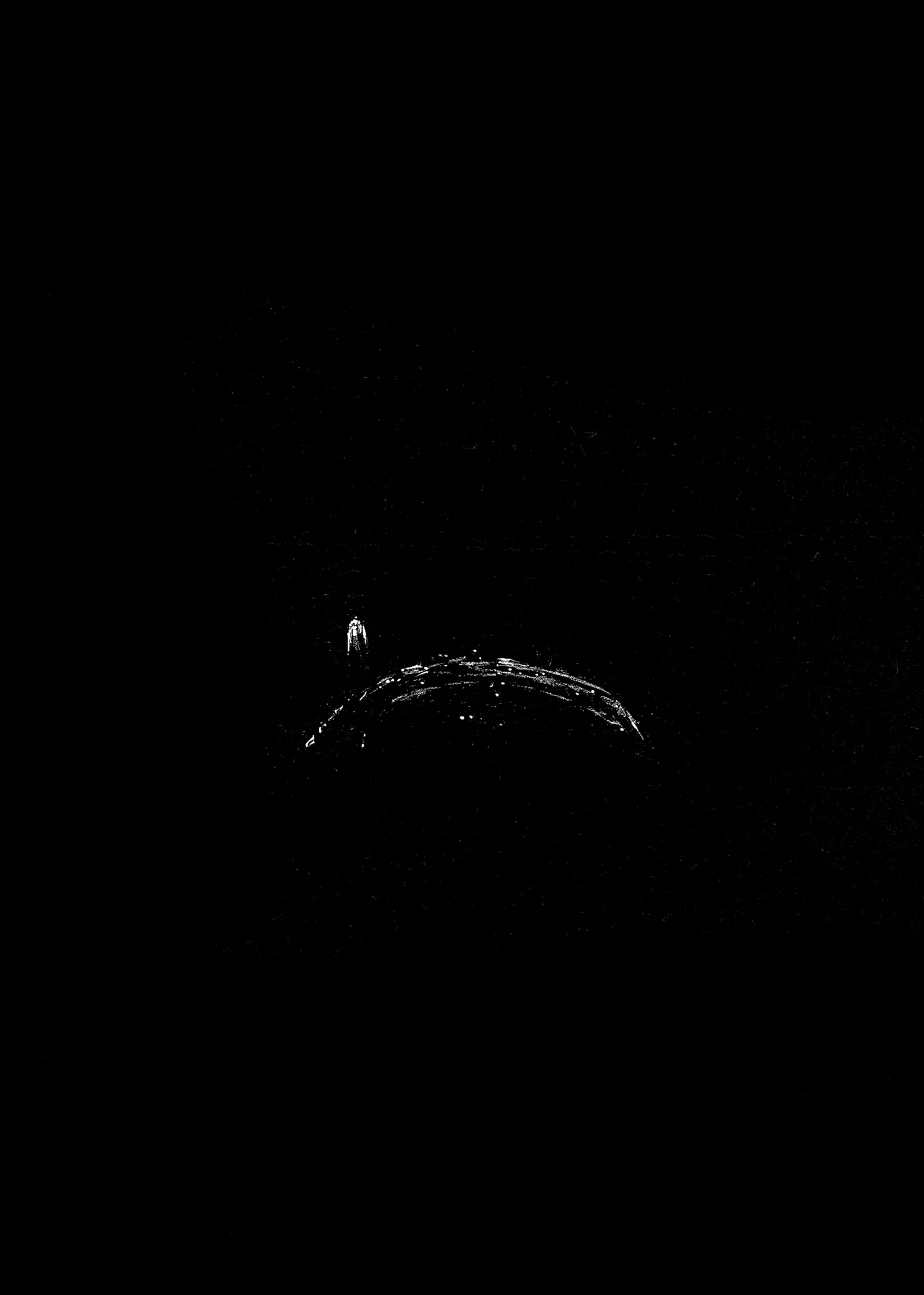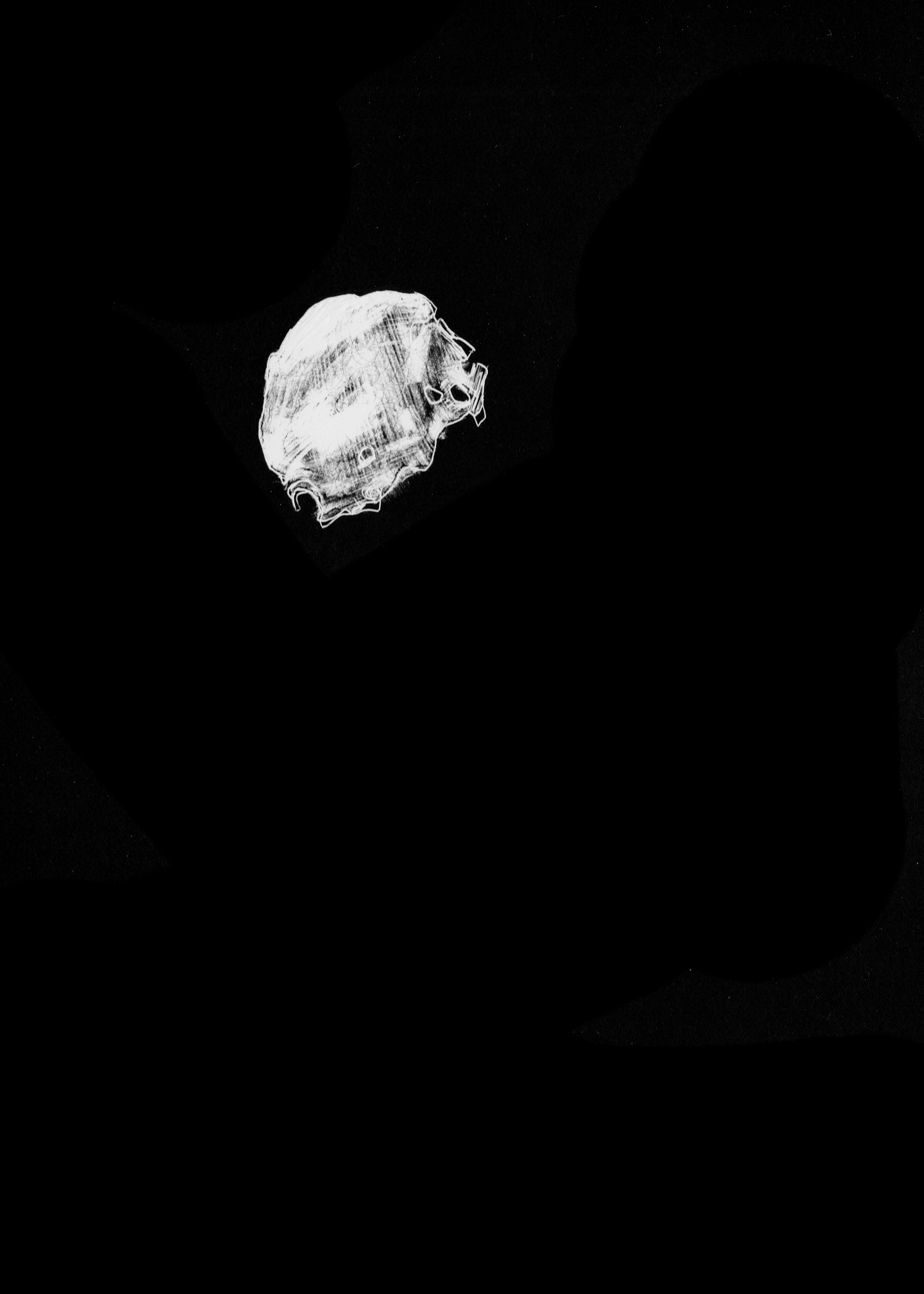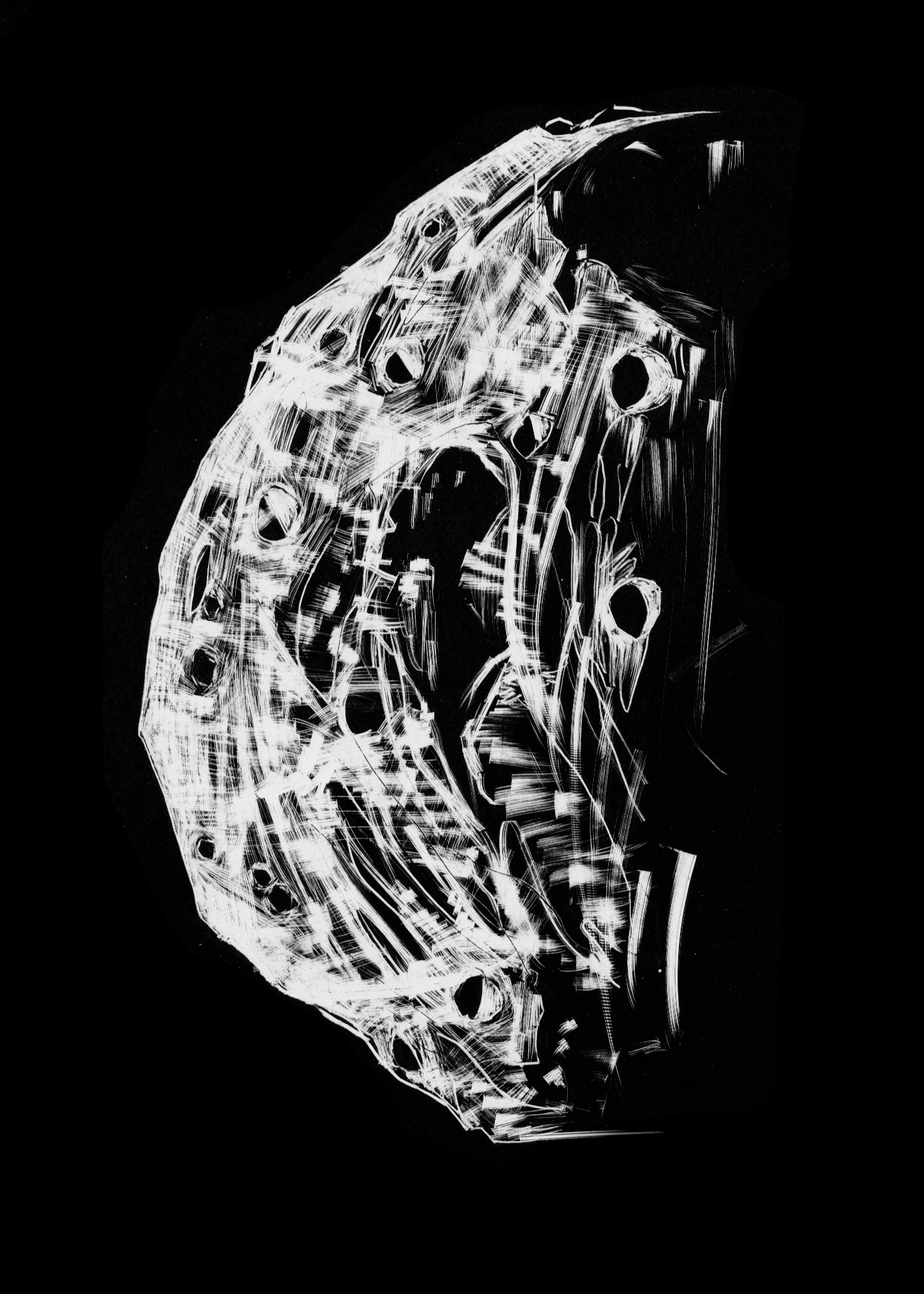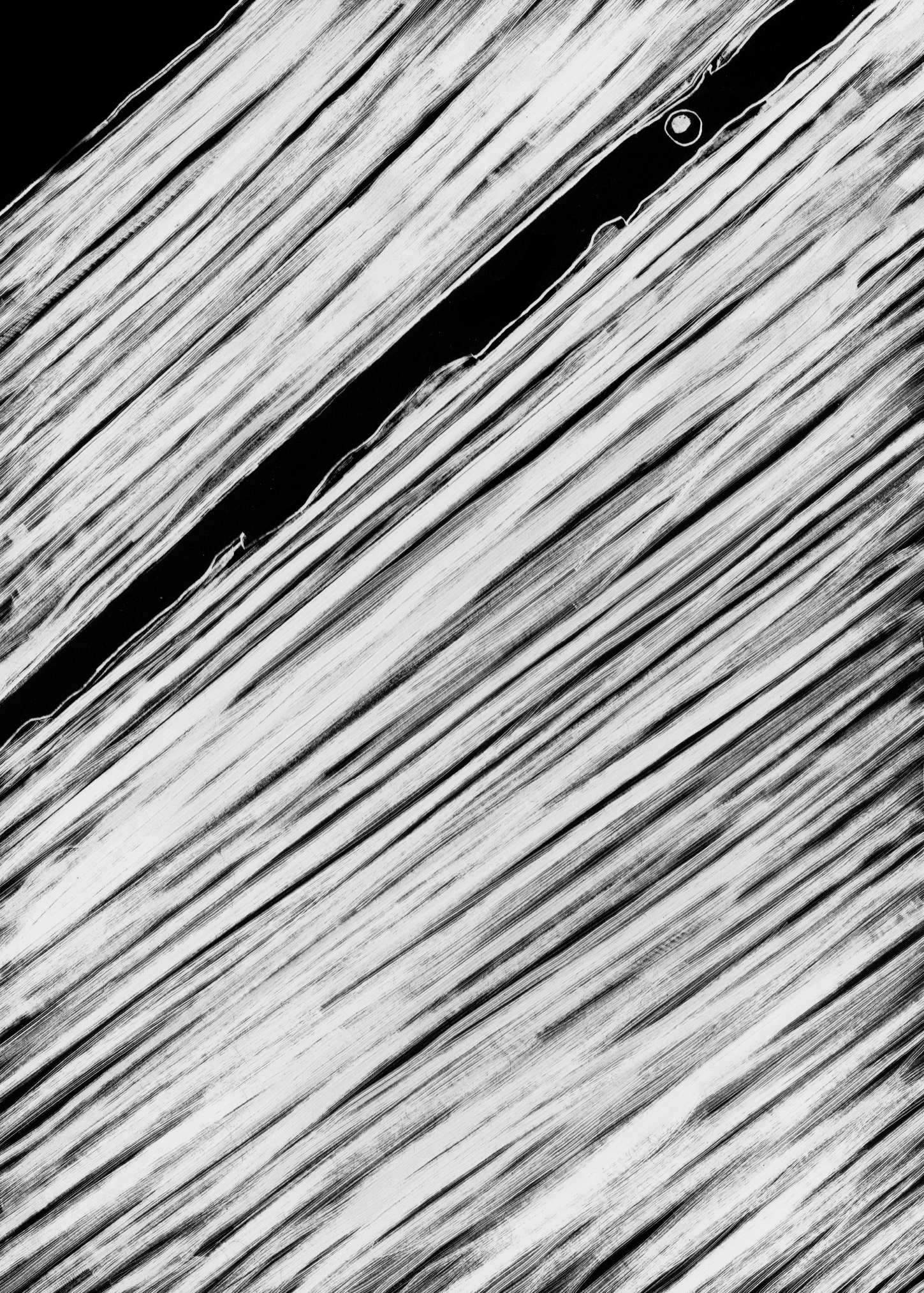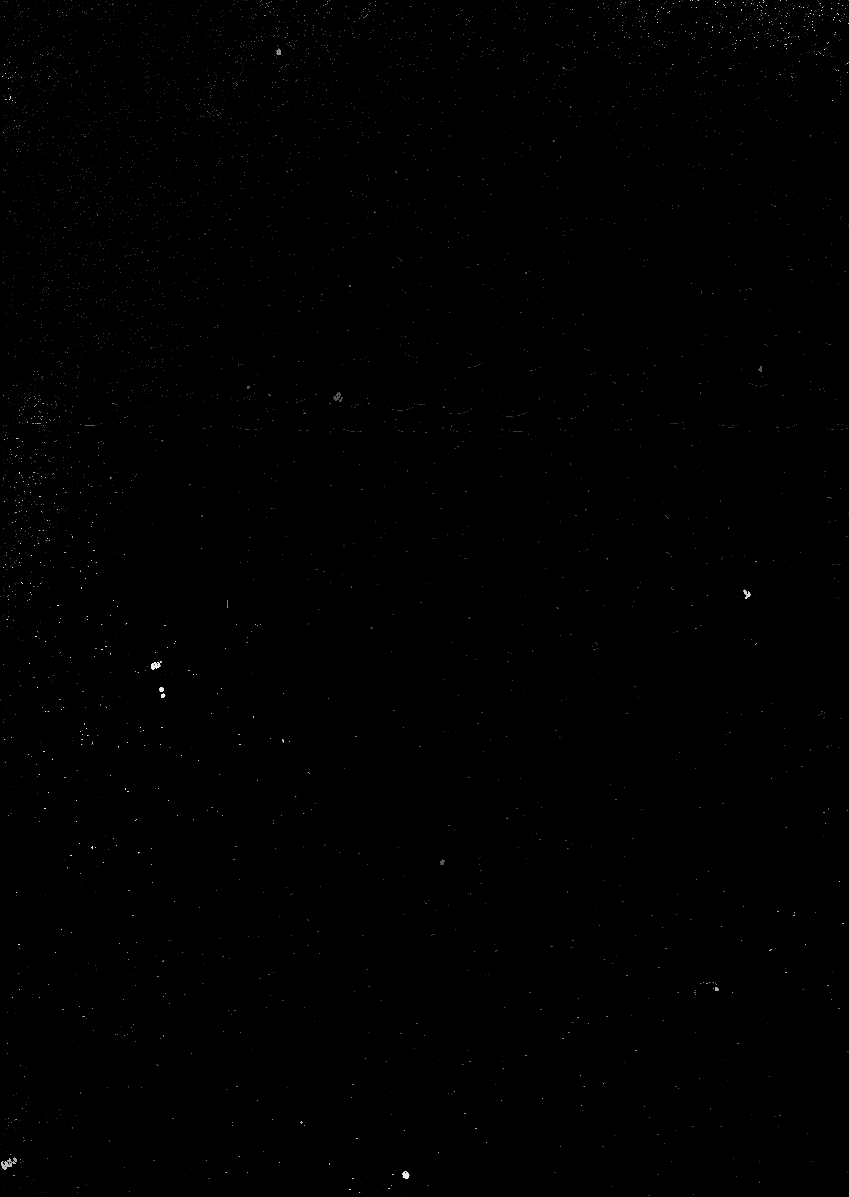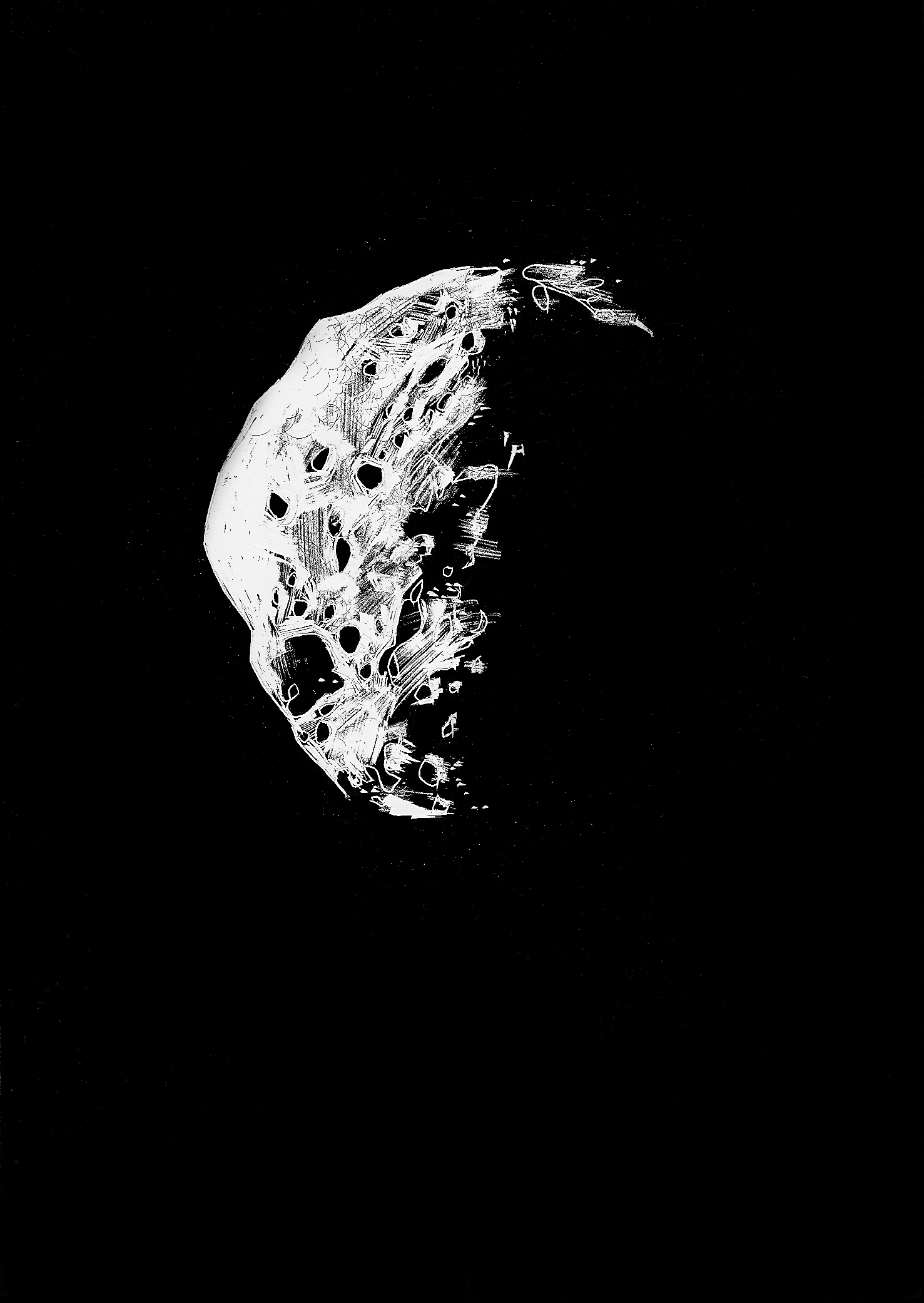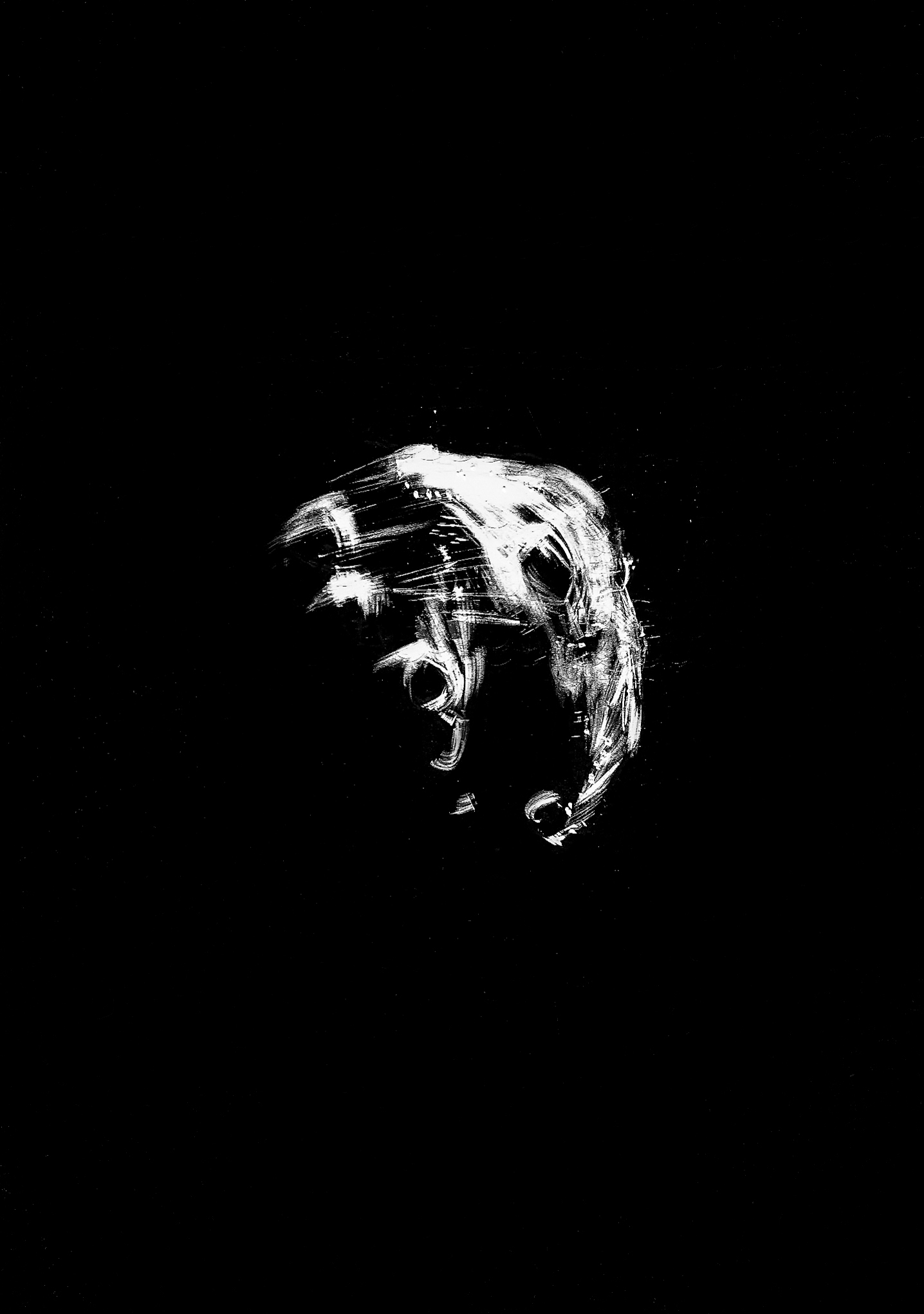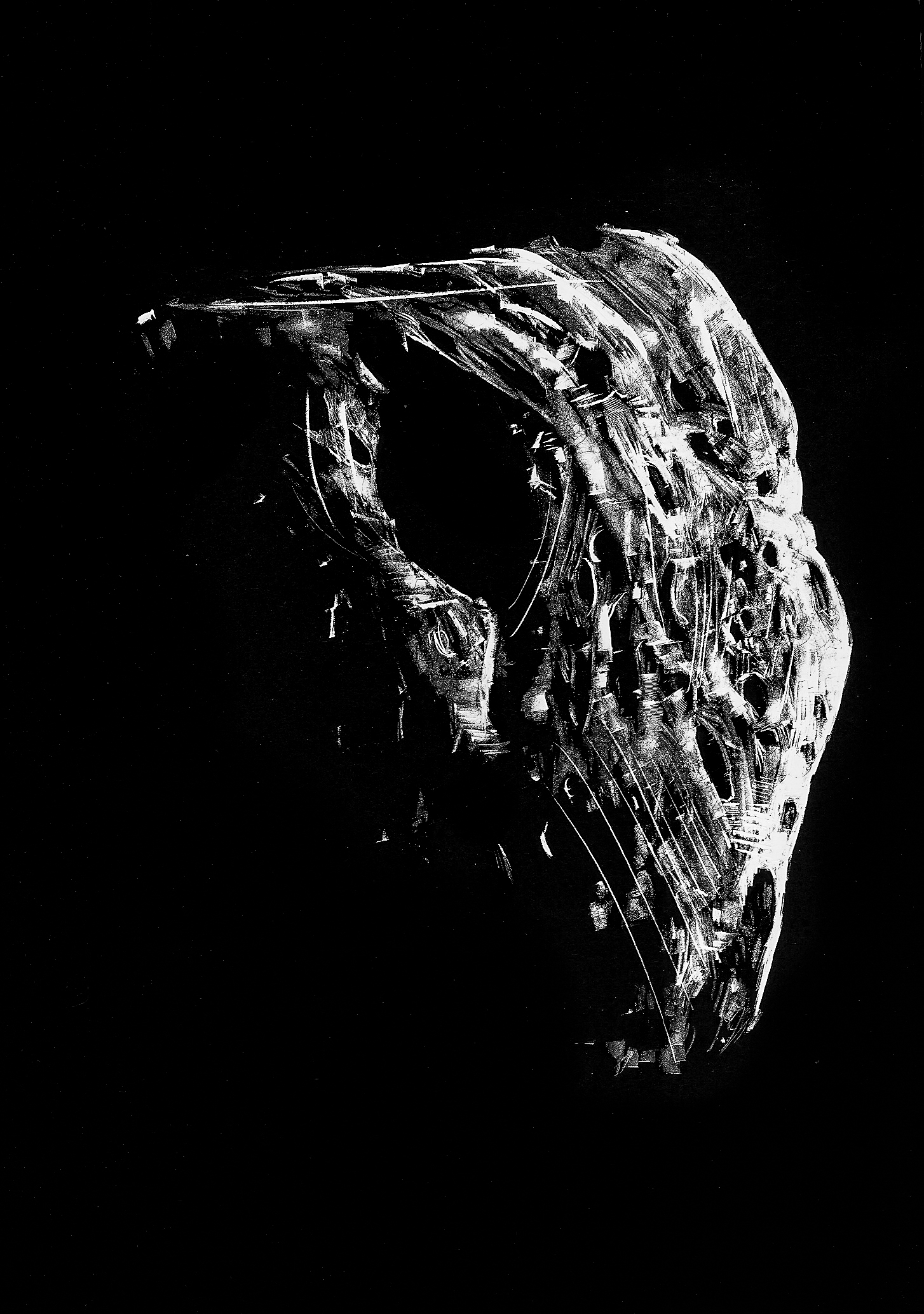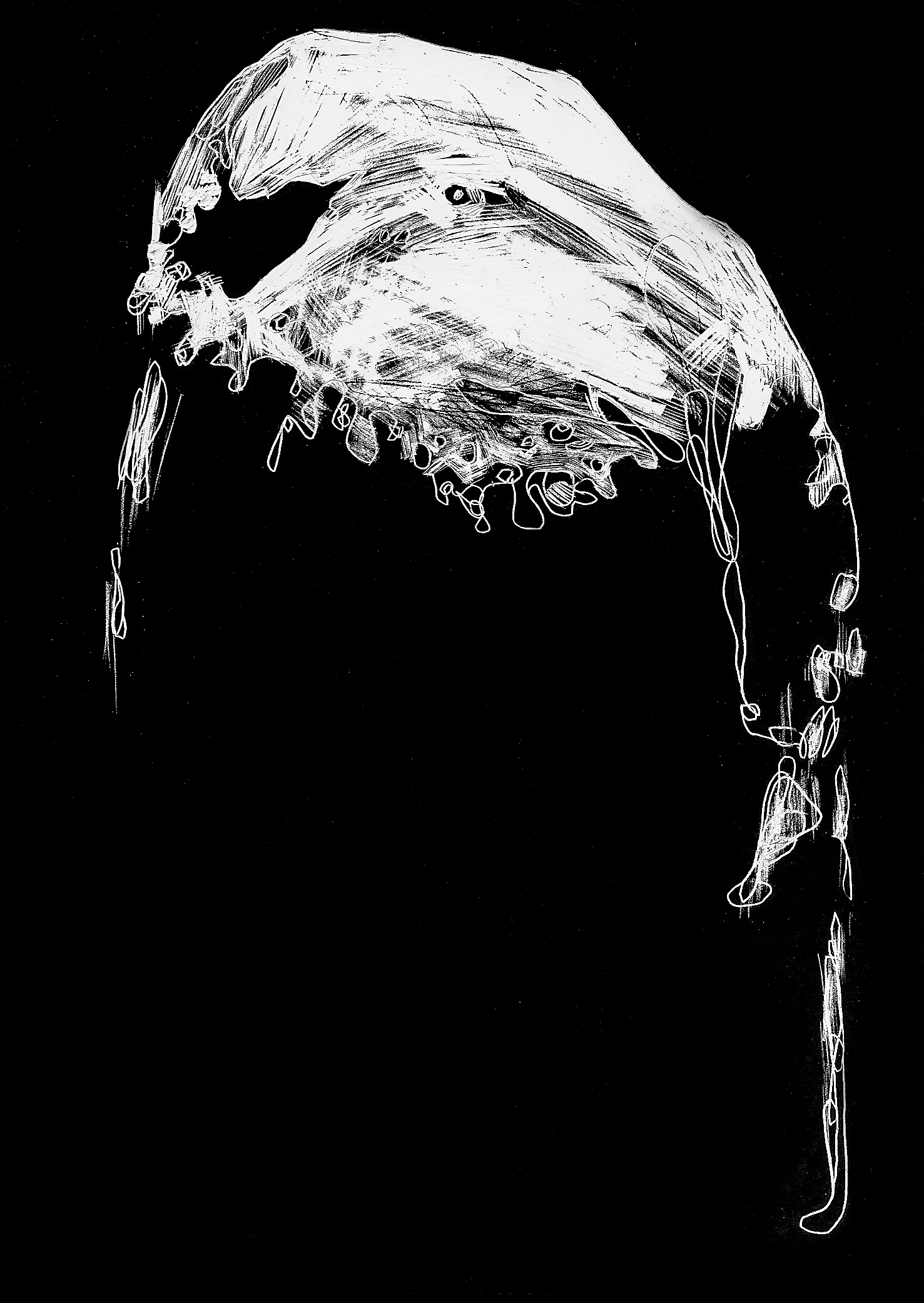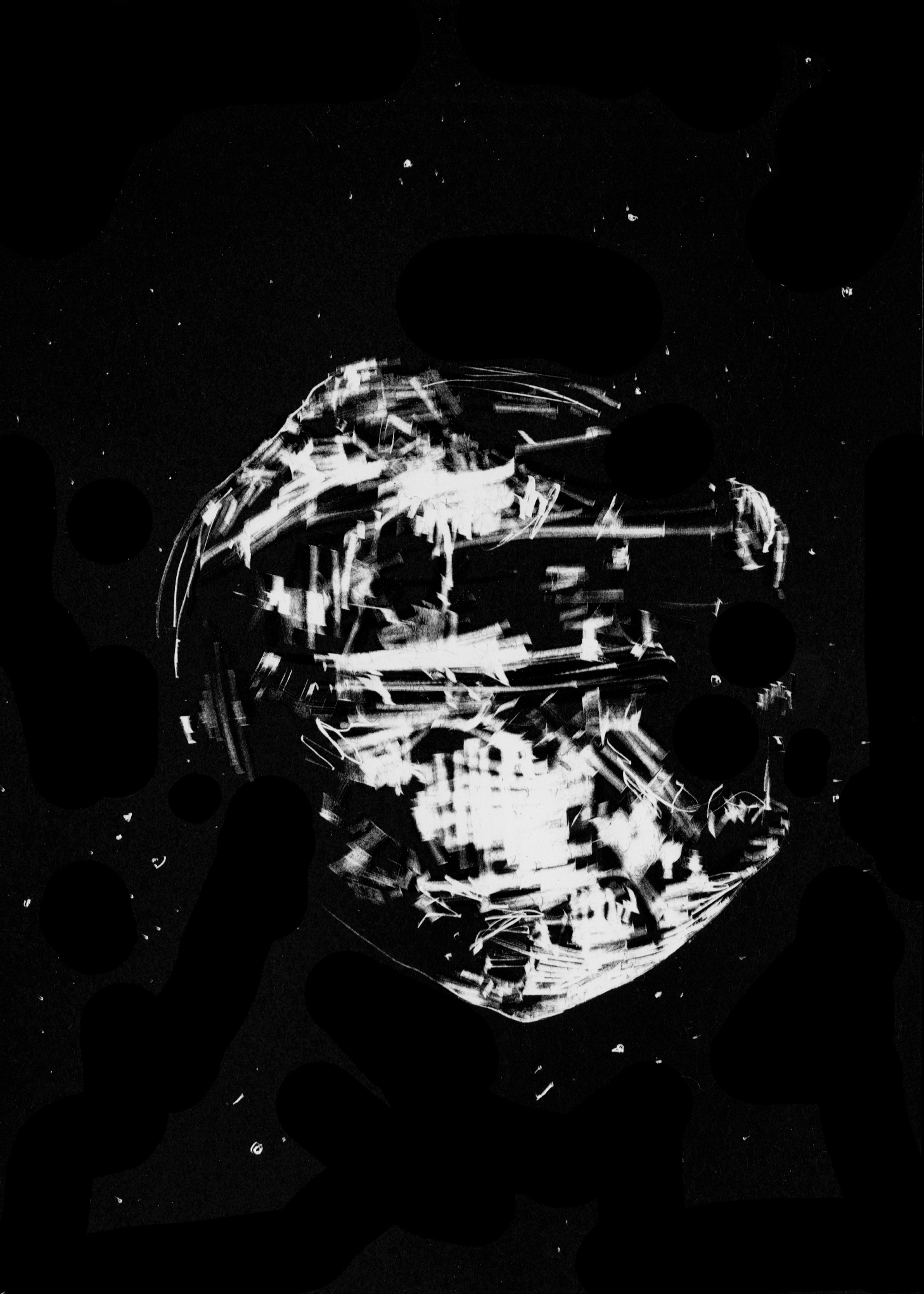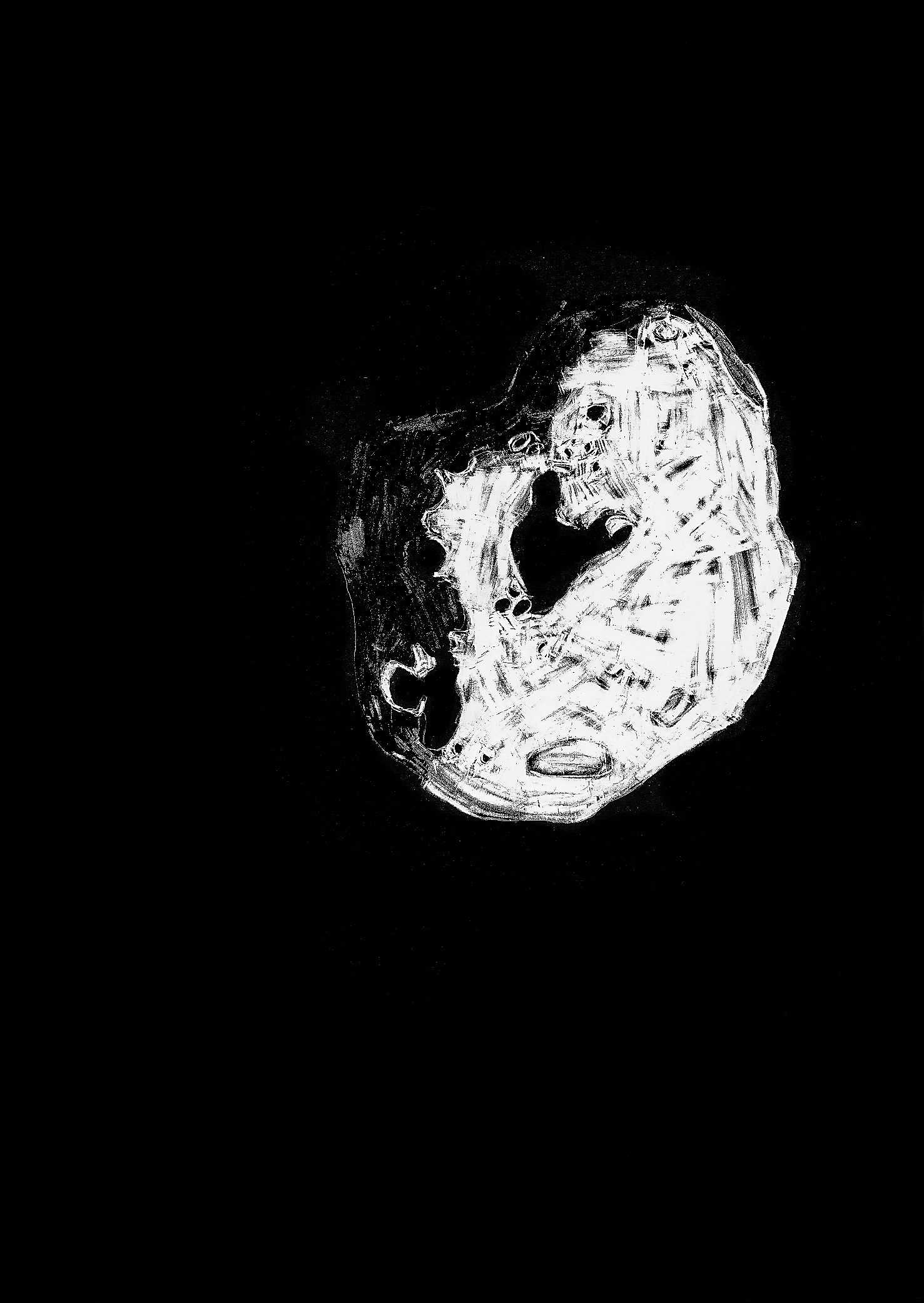****Scroll Down for Images
Karley Sullivan's Satellite Hand is a hand-drawn catalog of the named moons of our Solar System. The drawings are made on scratchboard and have unmistakable presence when seen in person, lines cut and plains rise on the surface of the plates much like topographic features. Sullivan sourced the images from the internet, carefully re-inscribing these celestial bodies from the digital to the physical. MOCAM takes this dance another step by curating Saturn’s moons back into the haptic flatness and illusory space of virtuality.
_____
NASA’s Cassini-Huygens spacecraft is an unmanned probe that was sent out to space with the intention of visiting and gathering images of Saturn and its moons. After a seven-year journey, Cassini-Huygens landed on Titan, Saturn’s largest satellite, becoming the first successful landing completed in the outer solar system. The probe confirmed that this moon is home to a network of dry riverbeds that lead to ethane, methane, and hydrocarbon lakes. These seas of liquid chemical compounds were detected by their low-radar reflectivity areas; some viscous substance capable of bouncing back waves of light. Bodies of glittering albedo.
Did Cassini see itself reflected in these galactic lakes and seas as it flew above?
_____
Sullivan’s work presents something I’ve never considered: that ghosts are not as we imagine them to be - translucent, ethereal, ectoplasmic apparitions lonely as they roam unnoticed among the living.
Ghosts have mass.
These drawings are echoes of solid things, subject to orbit. Hundreds of millions of miles from Earth, they are looped into a cosmic mobile, helplessly lodged in circular, elliptical, occasionally irregular tracks; deeply affected by the planet that has captured them as well as by each other. Never at rest, haunted and haunting. Ghosts circling other ghosts, ponderous bodies so far from our grasp that they become ethereal. With Satellite Hand, there are still more specters as Sullivan includes blank spaces adrift in a matrix of images. These are nods to the satellites not yet named, and their inclusion acknowledges the impossibility of complete comprehension.
The viewer also experiences a gravitational pull. This time the draw is into the grid, and then further into each individual piece, into each luminescent detail of every captured satellite. And with this steady gaze, in a marathon of looking, one can witness how light and dark become as inverse mirrors.
Absence and presence facing off.
_____
The labor of Satellite Hand lies in the weight of Sullivan’s touch - the piercing tools it uses and the pressure it enacts. Her hand is evident in the etchings left behind, her physical force apparent in the scratchings that have lifted charcoal from the underlying white chalky surface.
Her practice is not dissimilar to the role of the scientist, the anthropologist, the geologist - one who clears dust off an ancient relic, brushing away organic matter so that the object can be cataloged in the annals of human discovery. It is a process of unearthing, of creation through removal. Delicate lines, frantic scratched gashes, calm swirls, delirious specks, and intersectional hatchings displace the charcoal and excavate the board’s surface. Pockets of erasure create a remarkable sense of contrast and meditational intent.
Deletion begets addition.
_____
Cassini has nearly depleted its fuel supply and has now entered its final phase. Rather than risk potential collision with a moon, its human operators will send this bloodless explorer directly towards the ringed planet in one last burst of negative addition. Upon entry into the atmosphere of Saturn, the Roman God of Time, Cassini will burn into nothing. Cassini has lived in the spectrum between nexus and finale, bound to reach a technological nirvana in its eminent descent.
It has seen nearly all that it came to see.
_____
It’s this same understanding of nested, yet finite discovery that Satellite Hand celebrates. This is no manifesto of ceaseless discovery but a collection of touches - some aggressive, others delicate, but all irrevocably human. And Sullivan serves, esctatic yet dutiful, as the scientist and the scribe, the anthropologist and the oracle, and ultimately, the mortal hand at the panel of mission control.
Leah Clancy, August 2017



